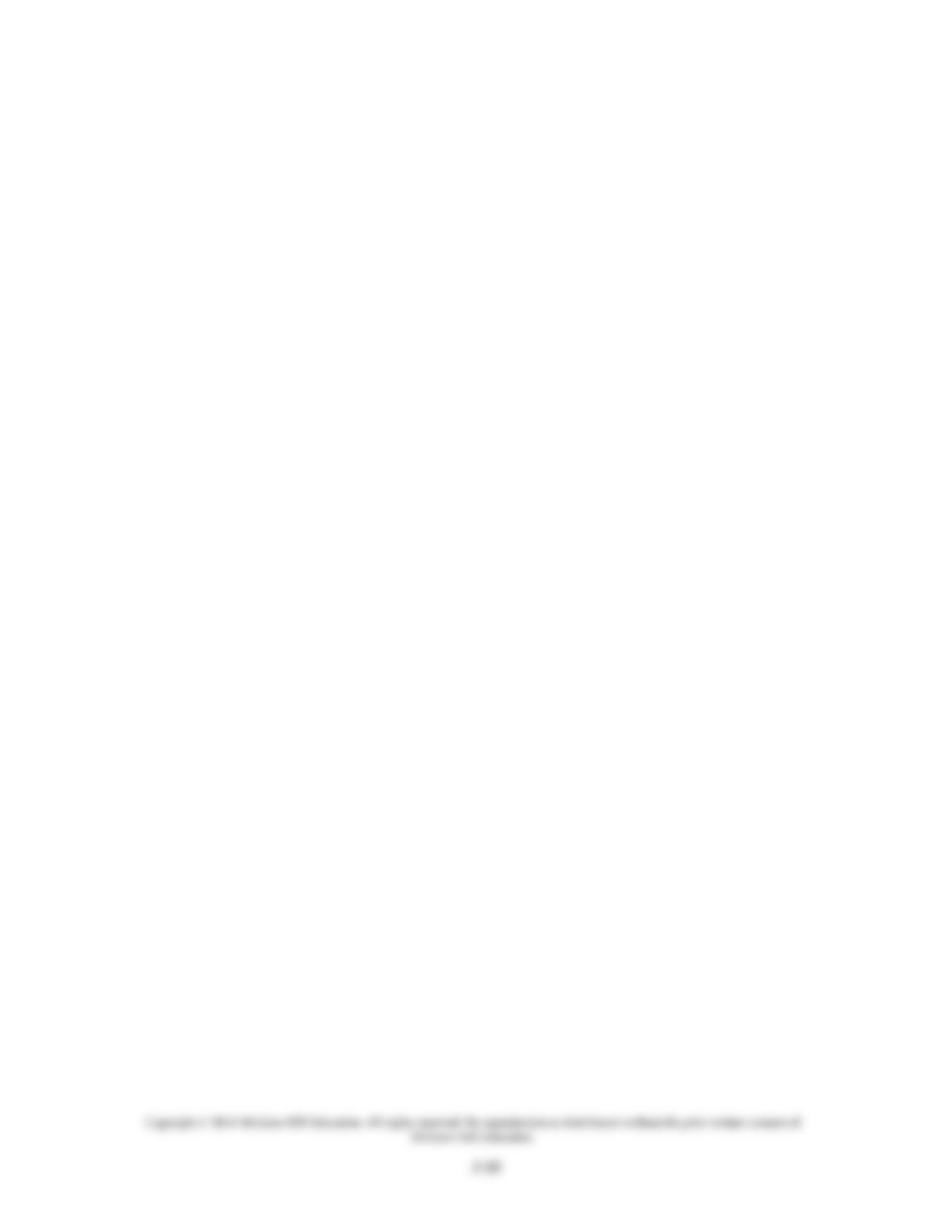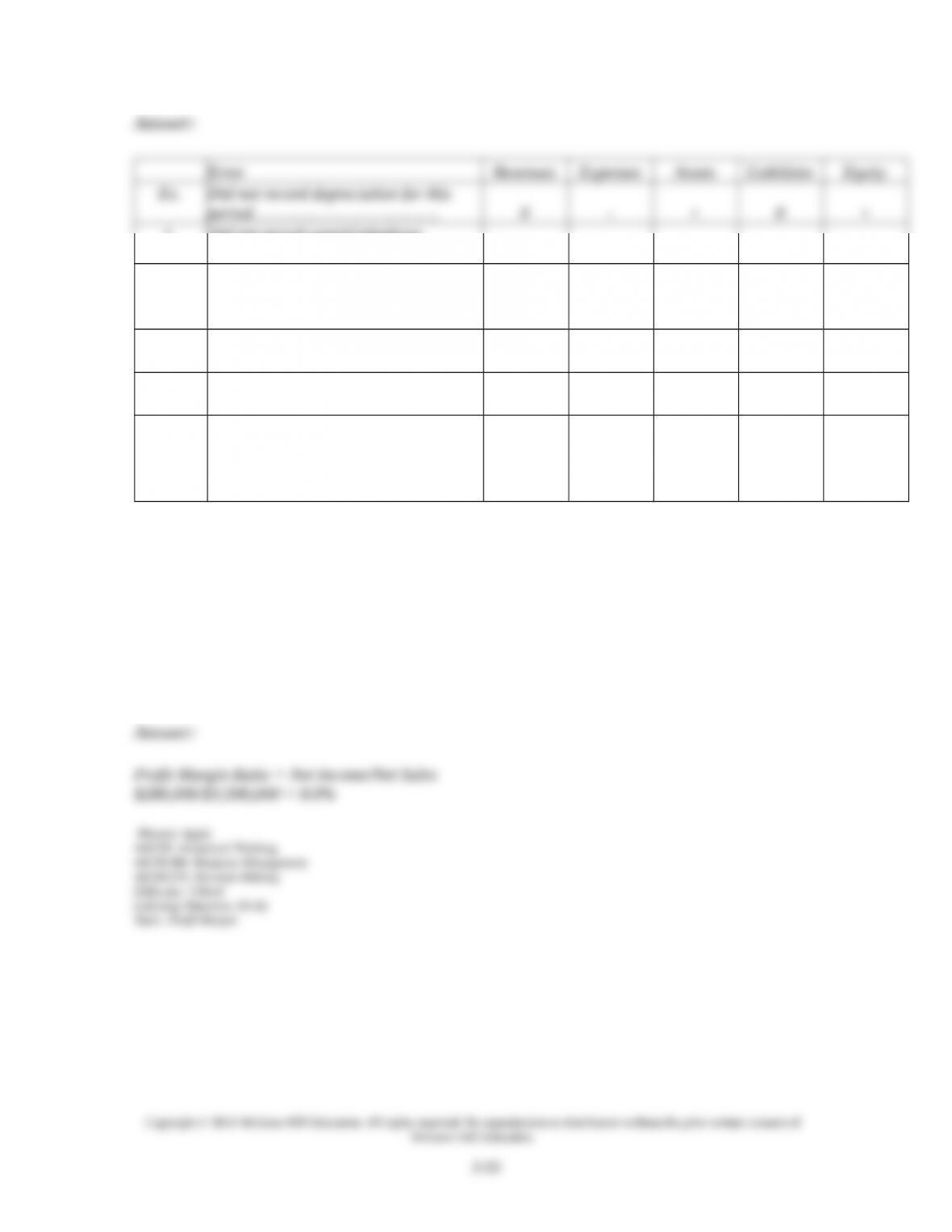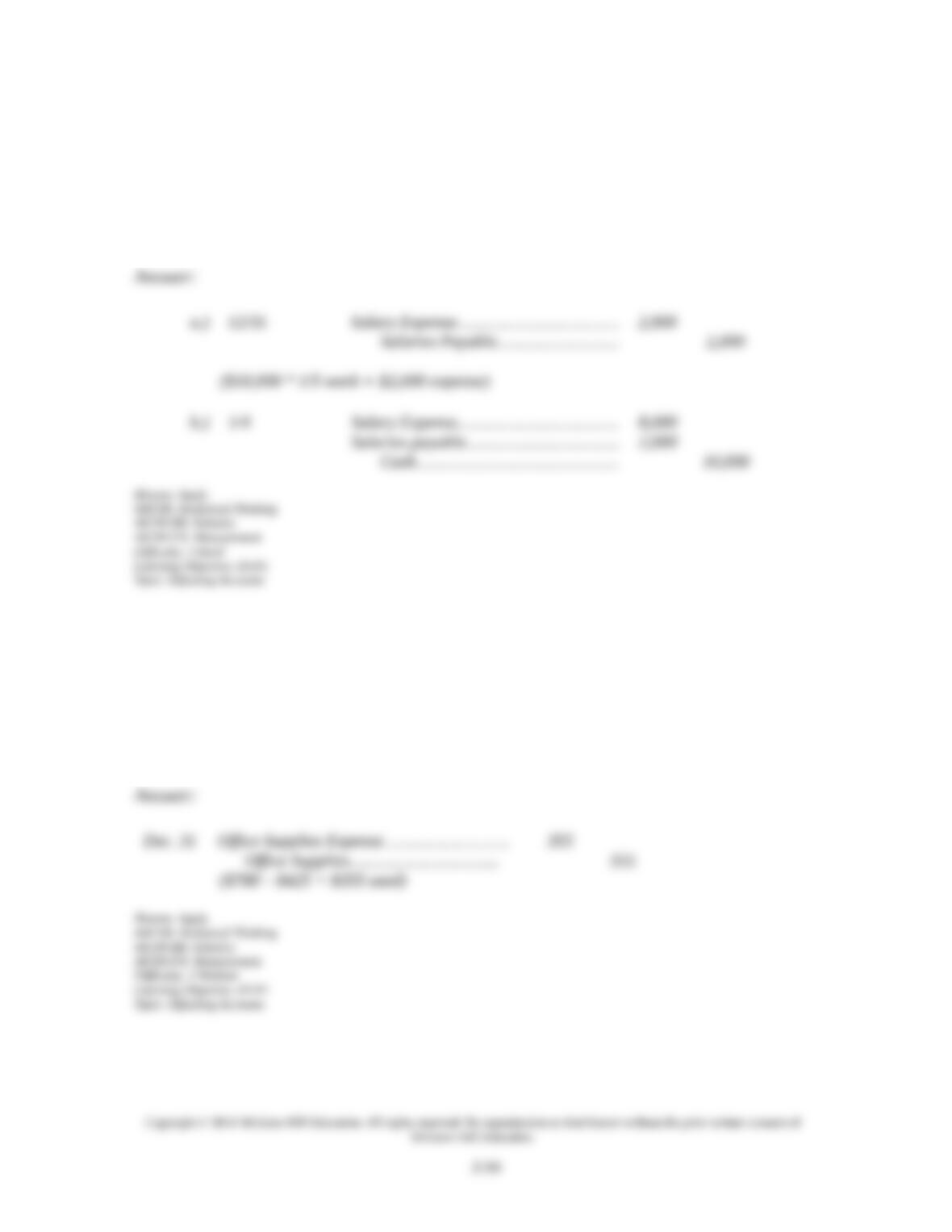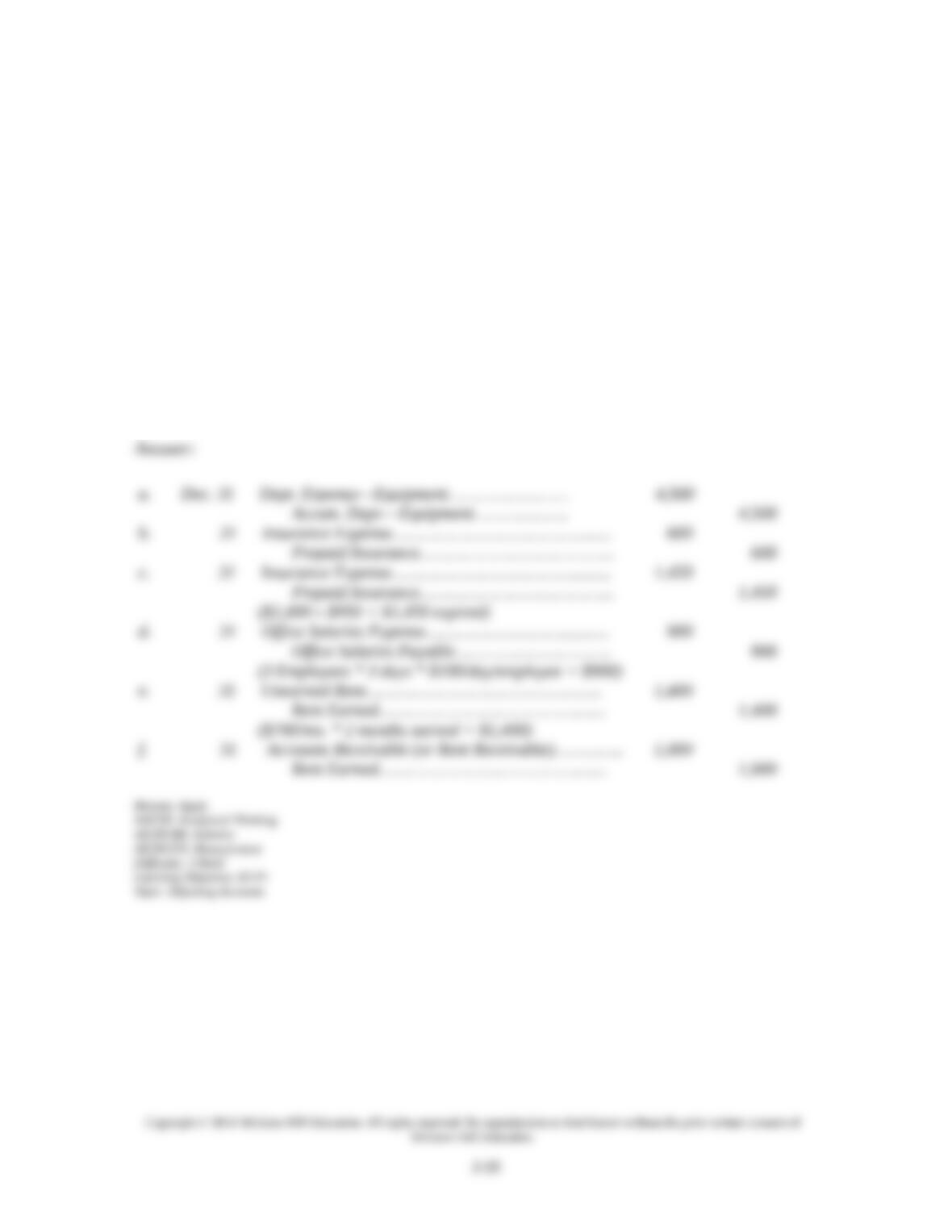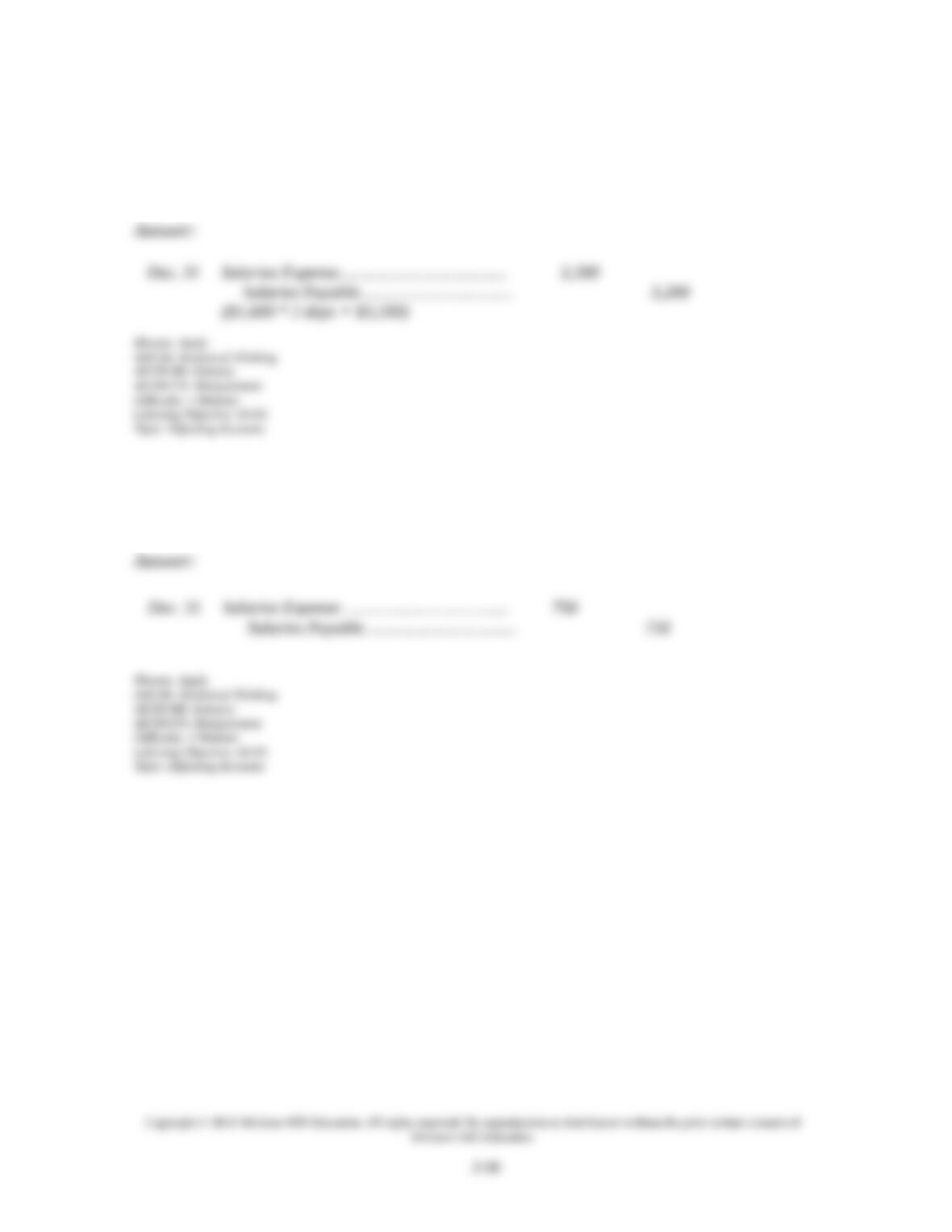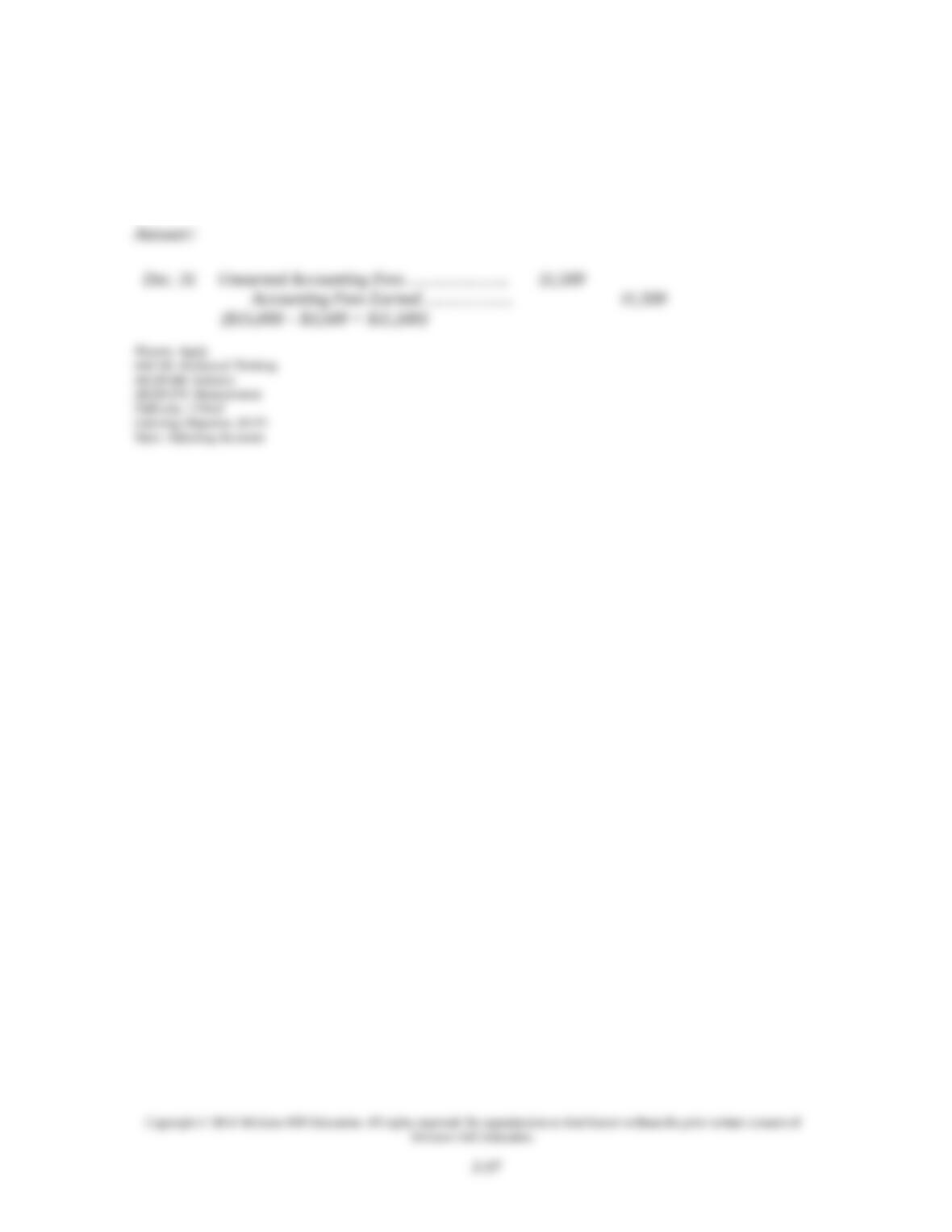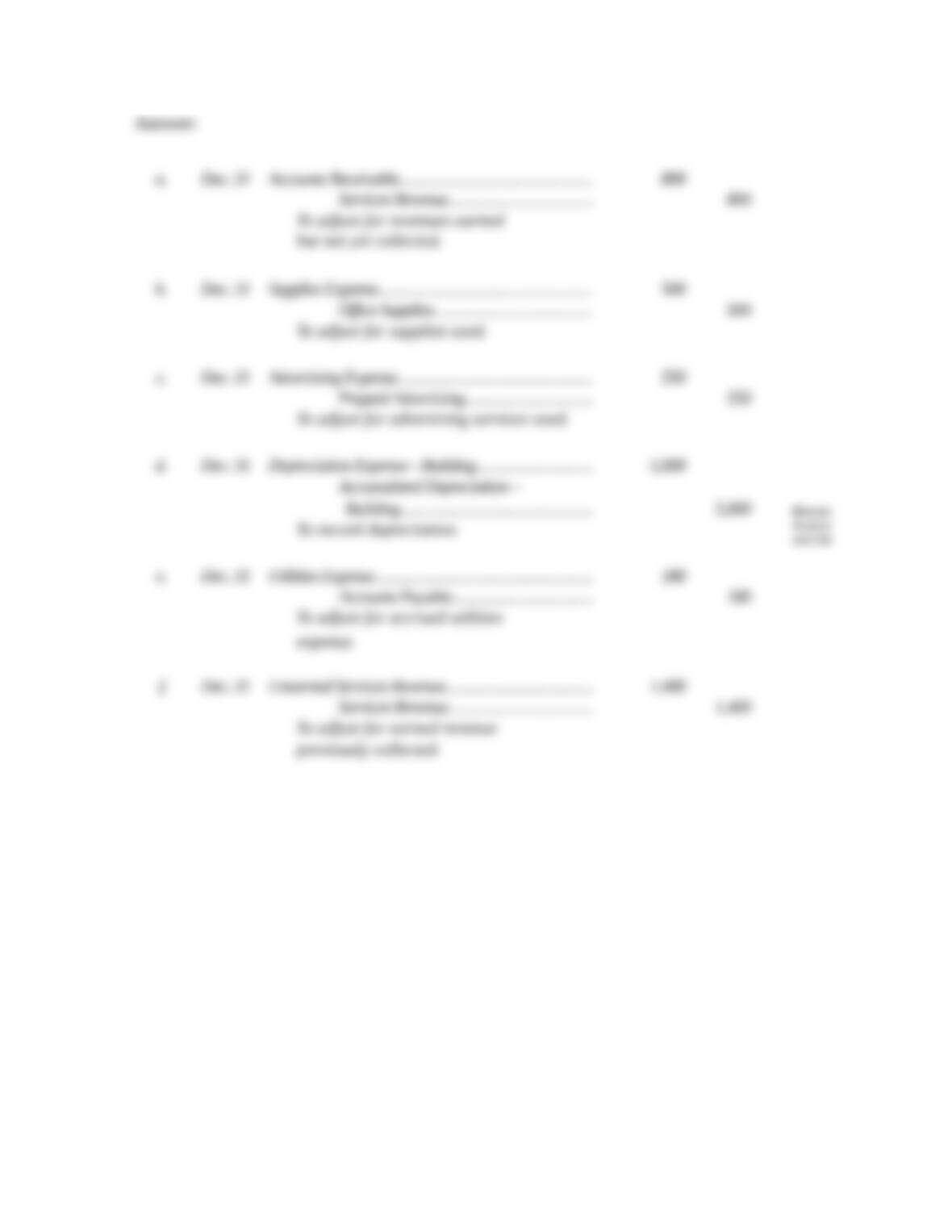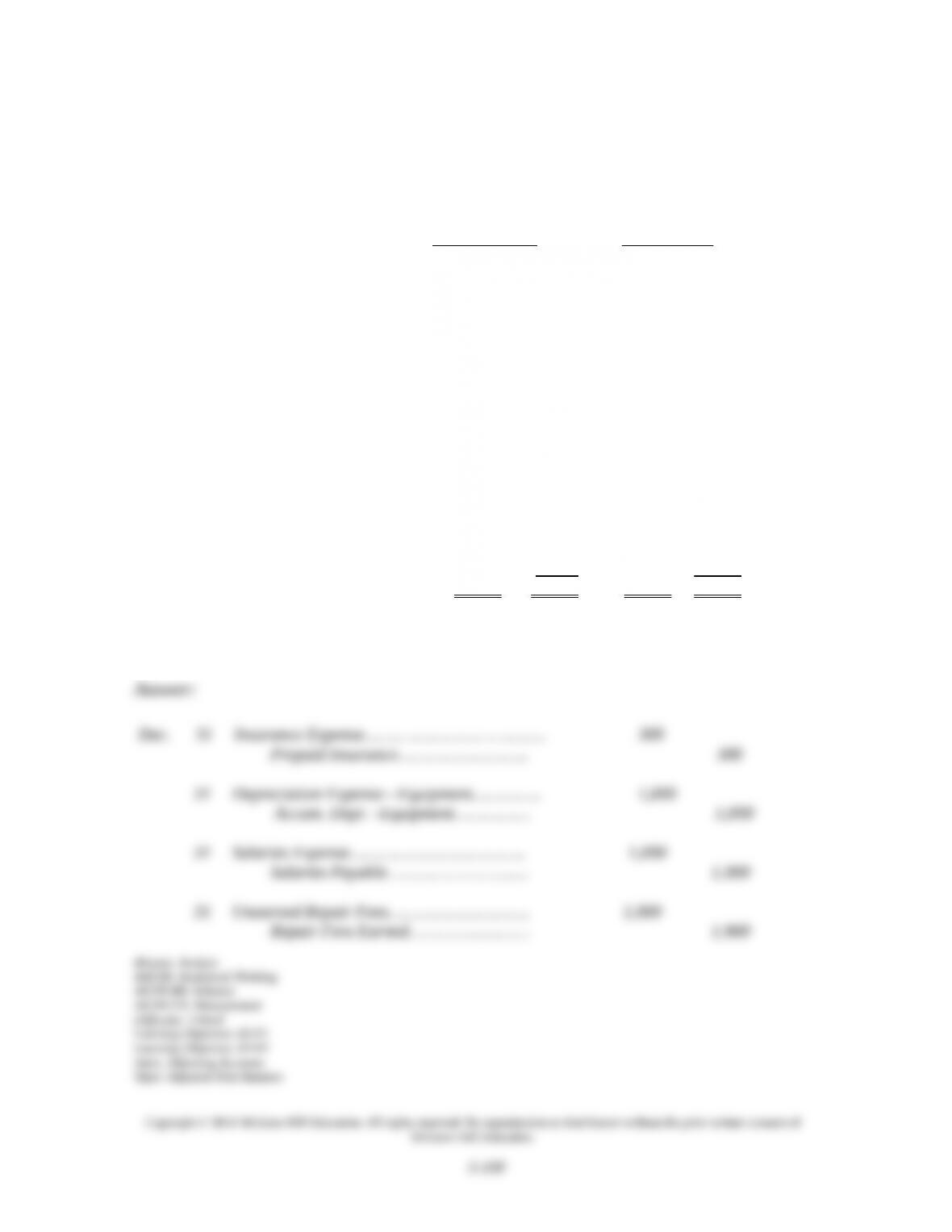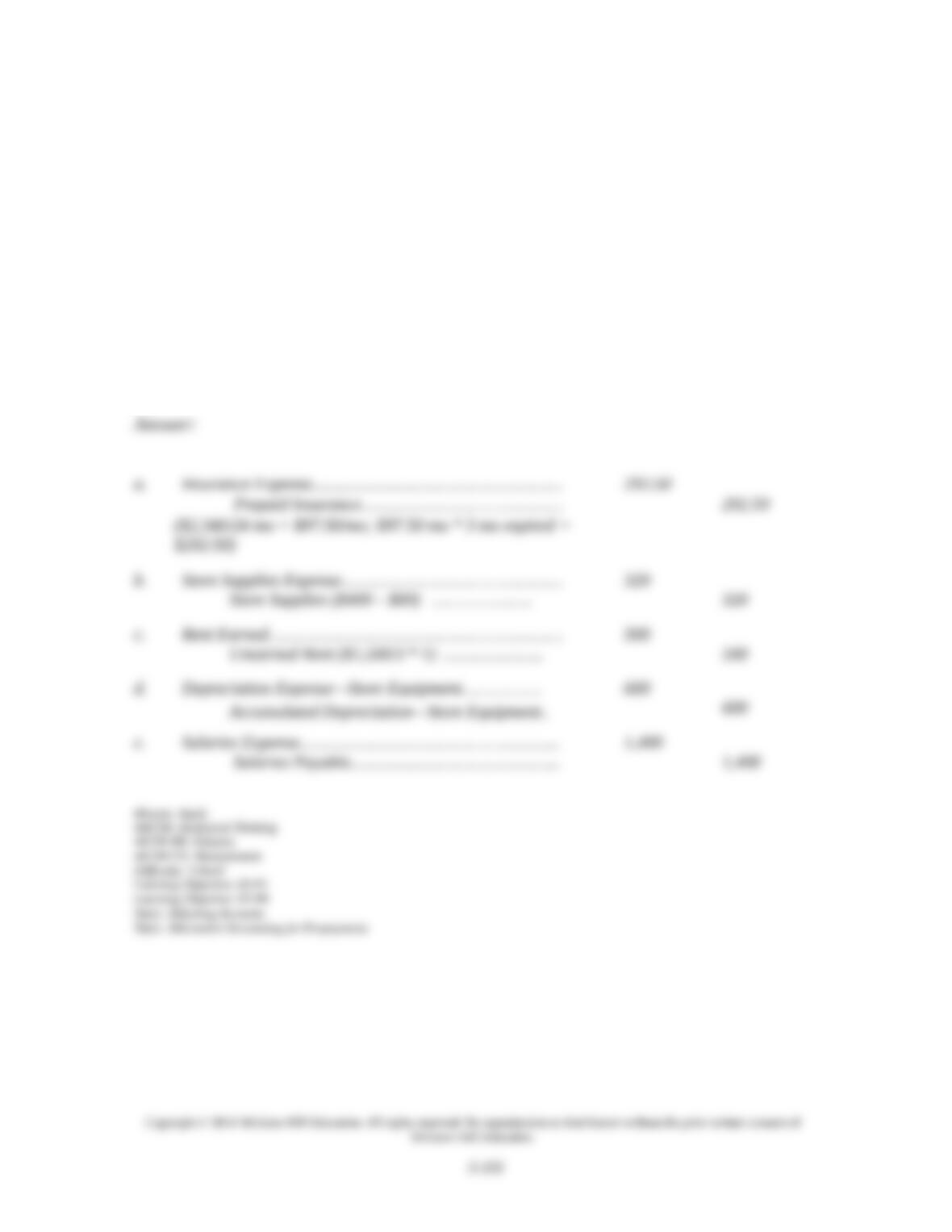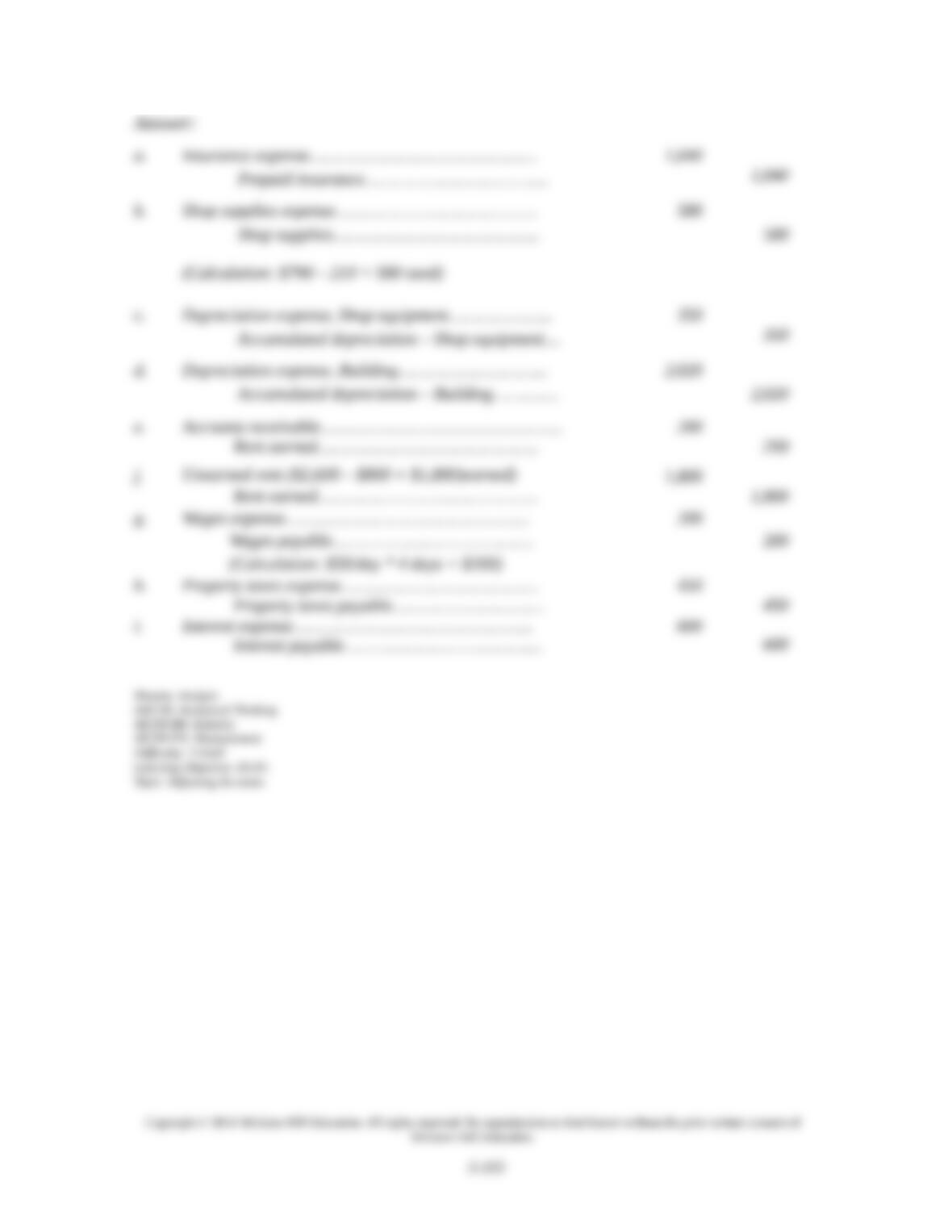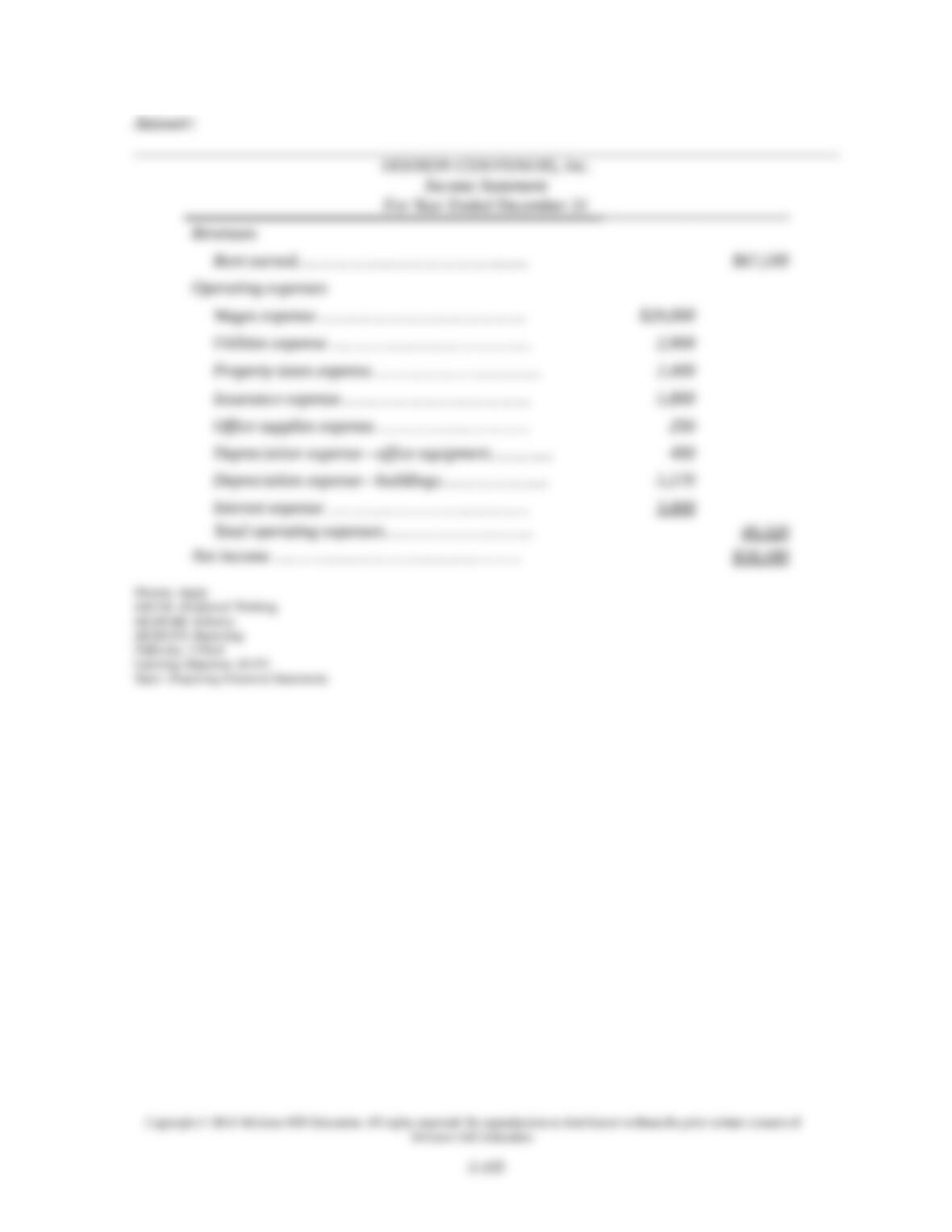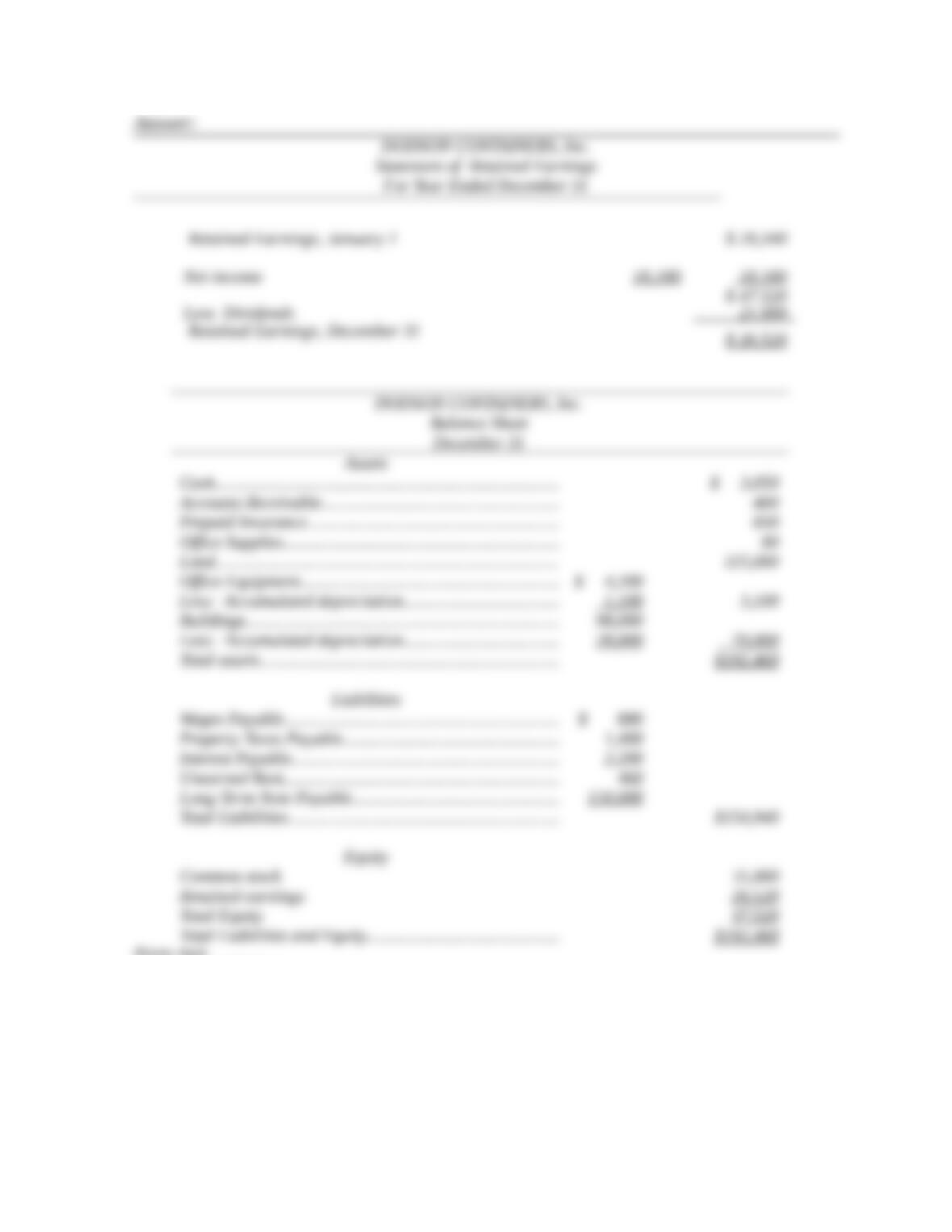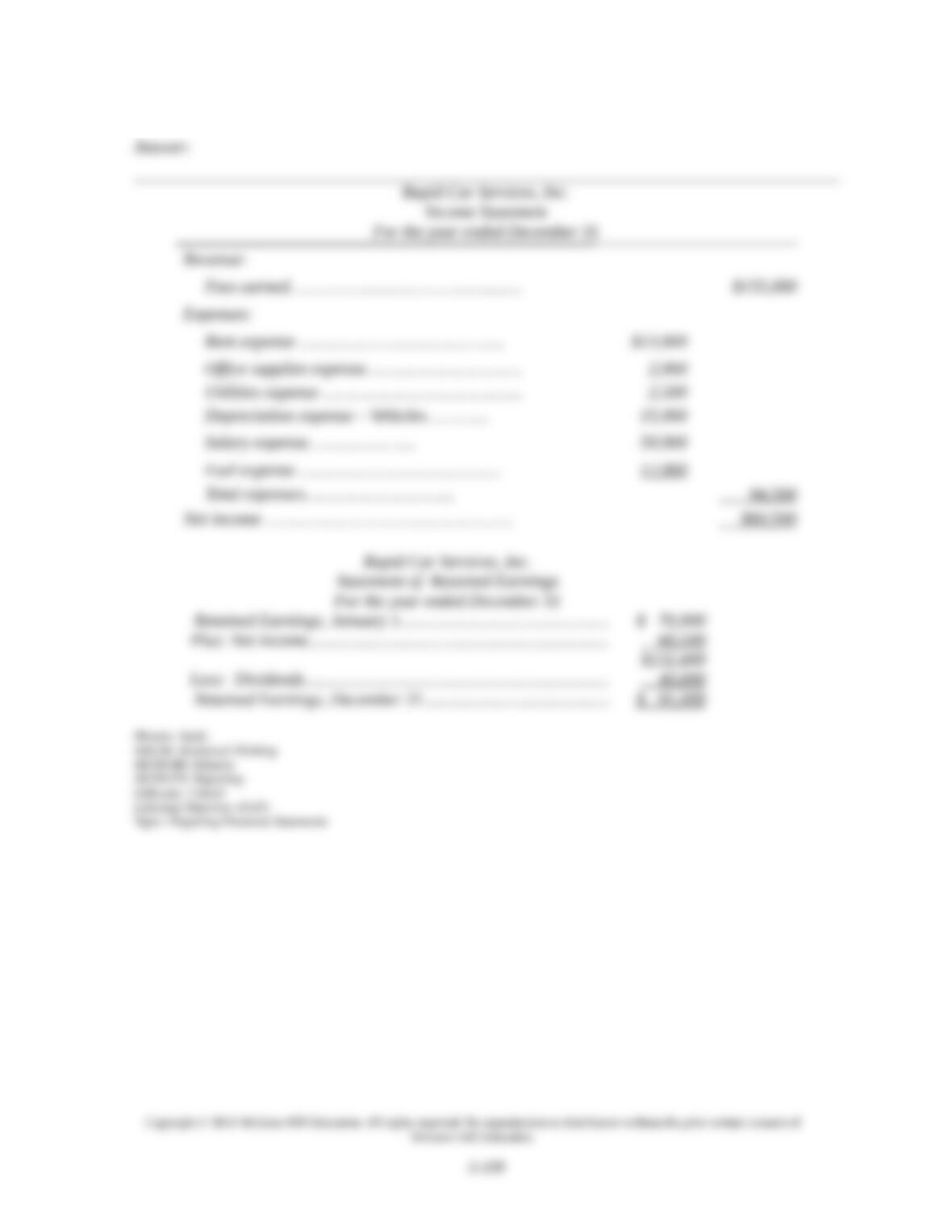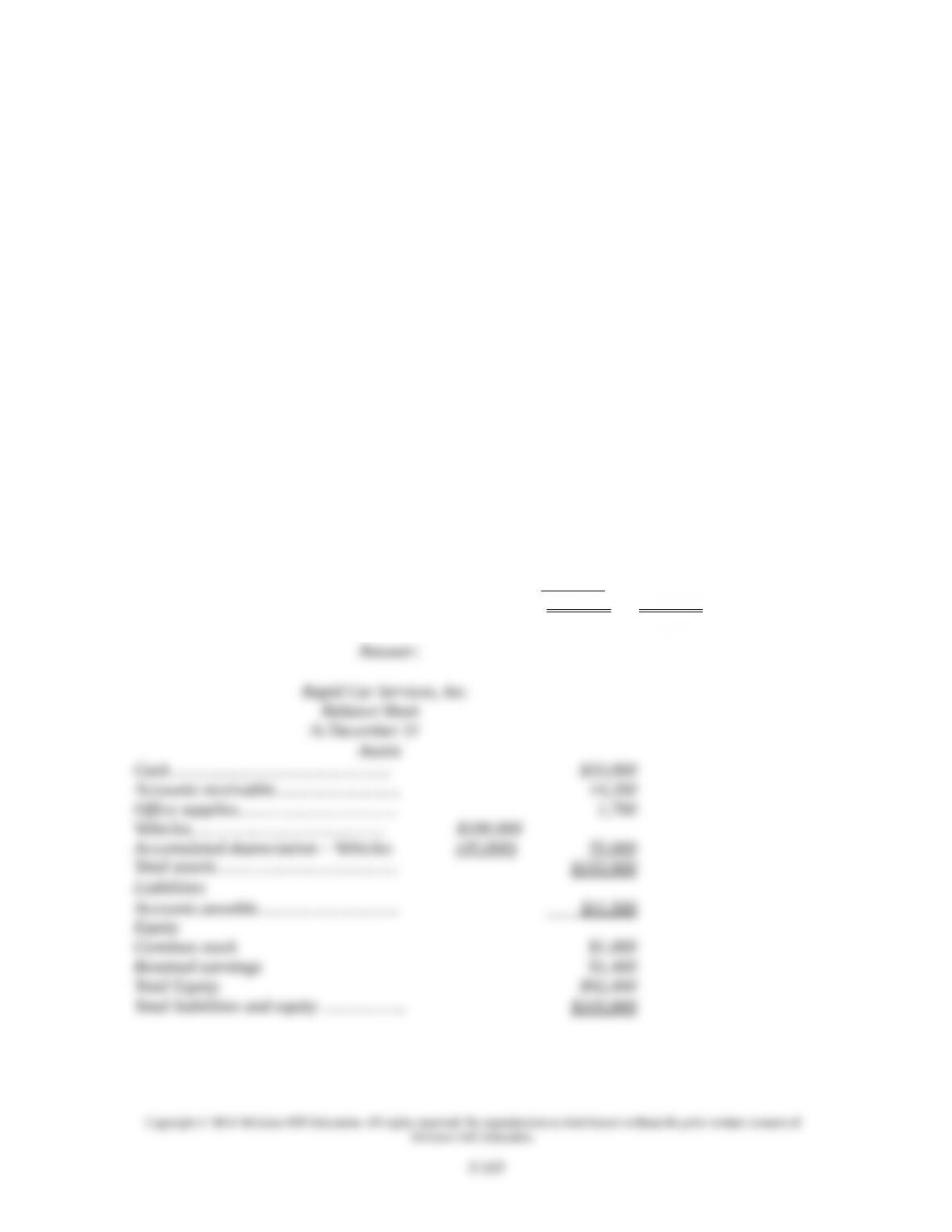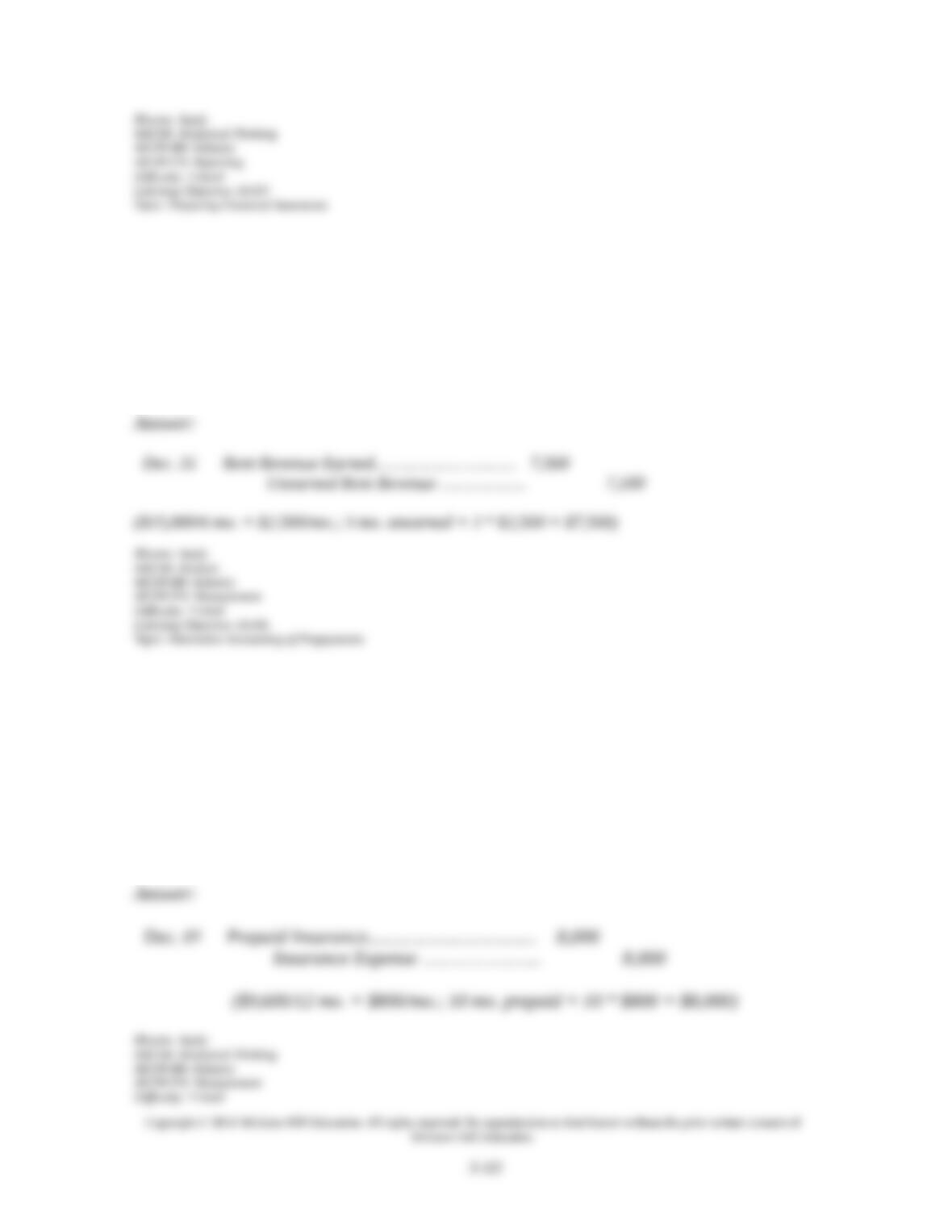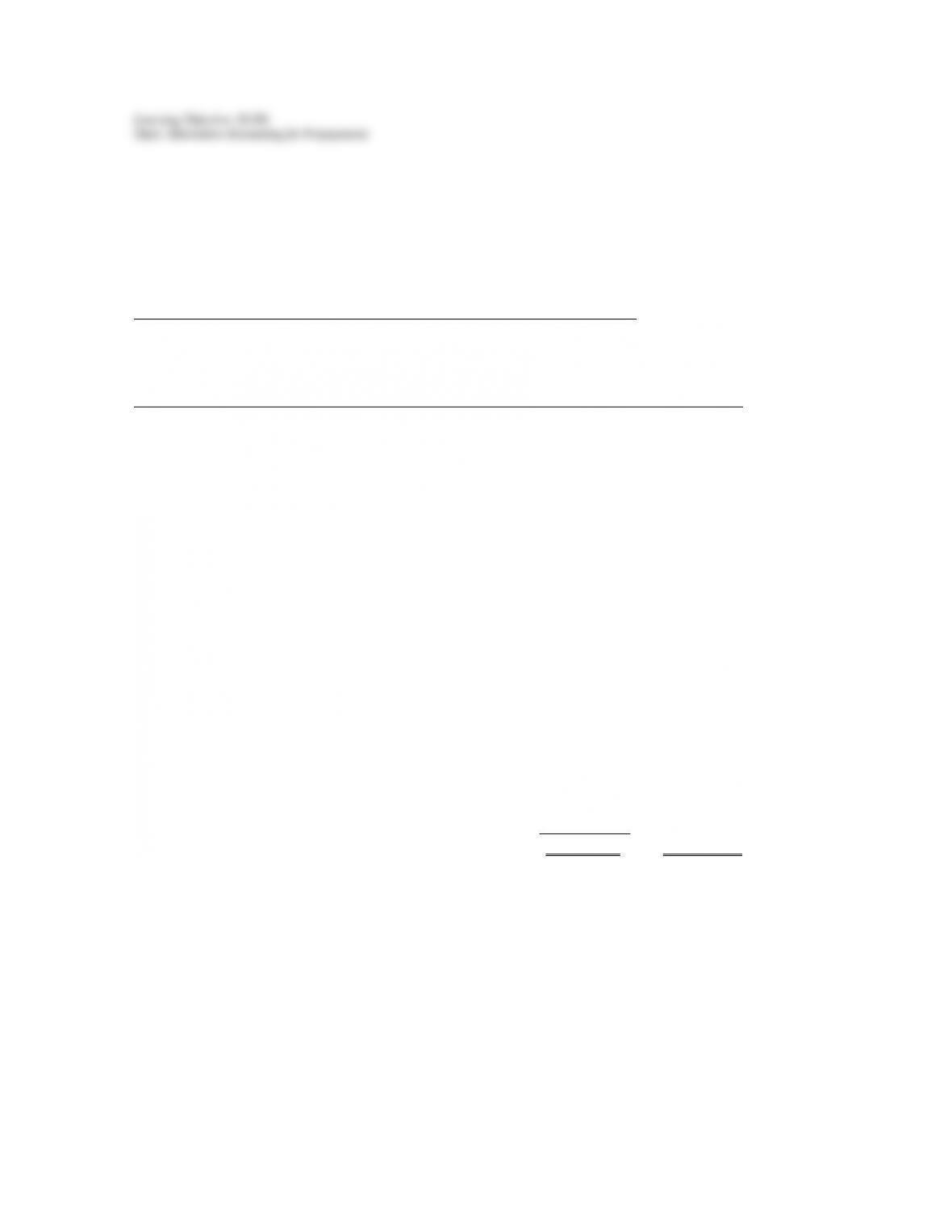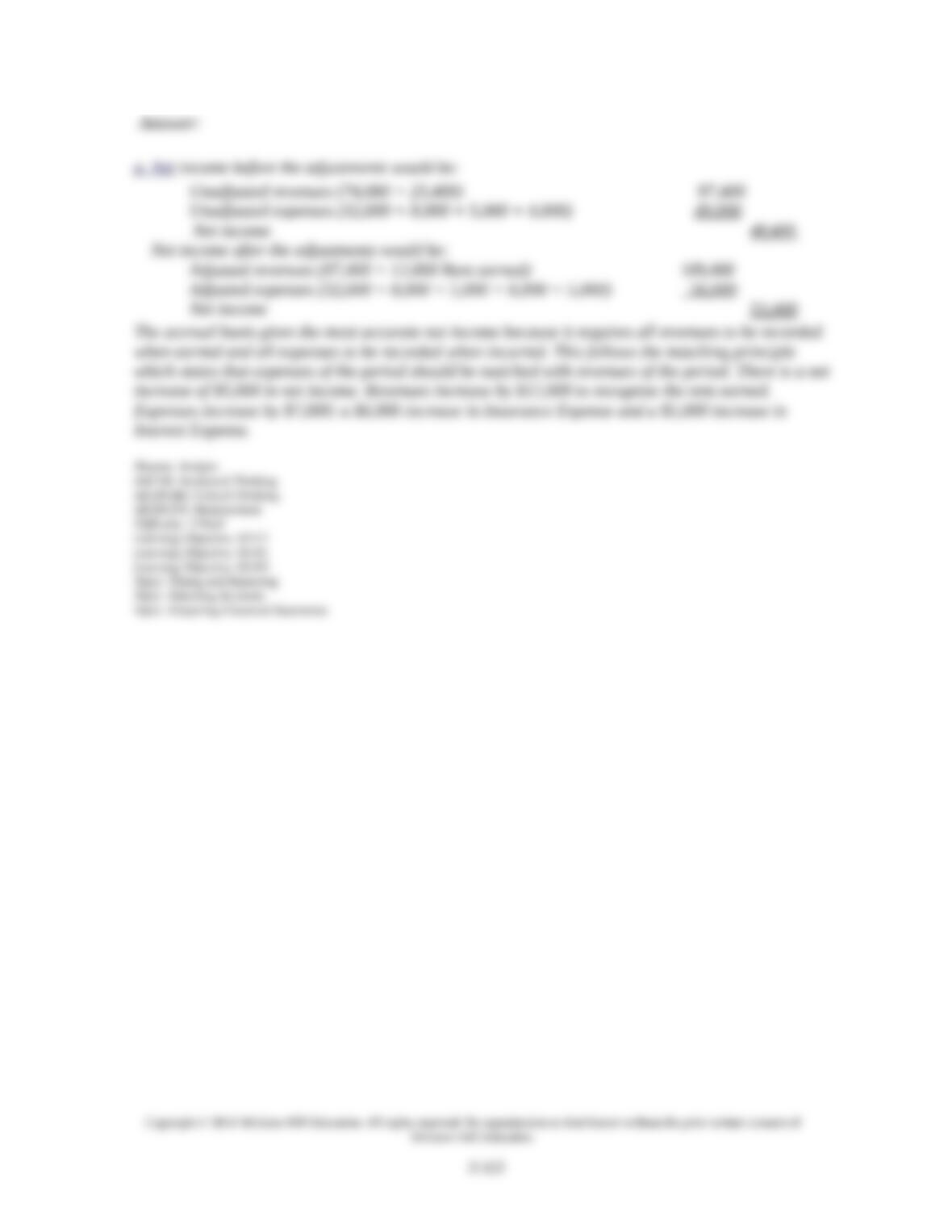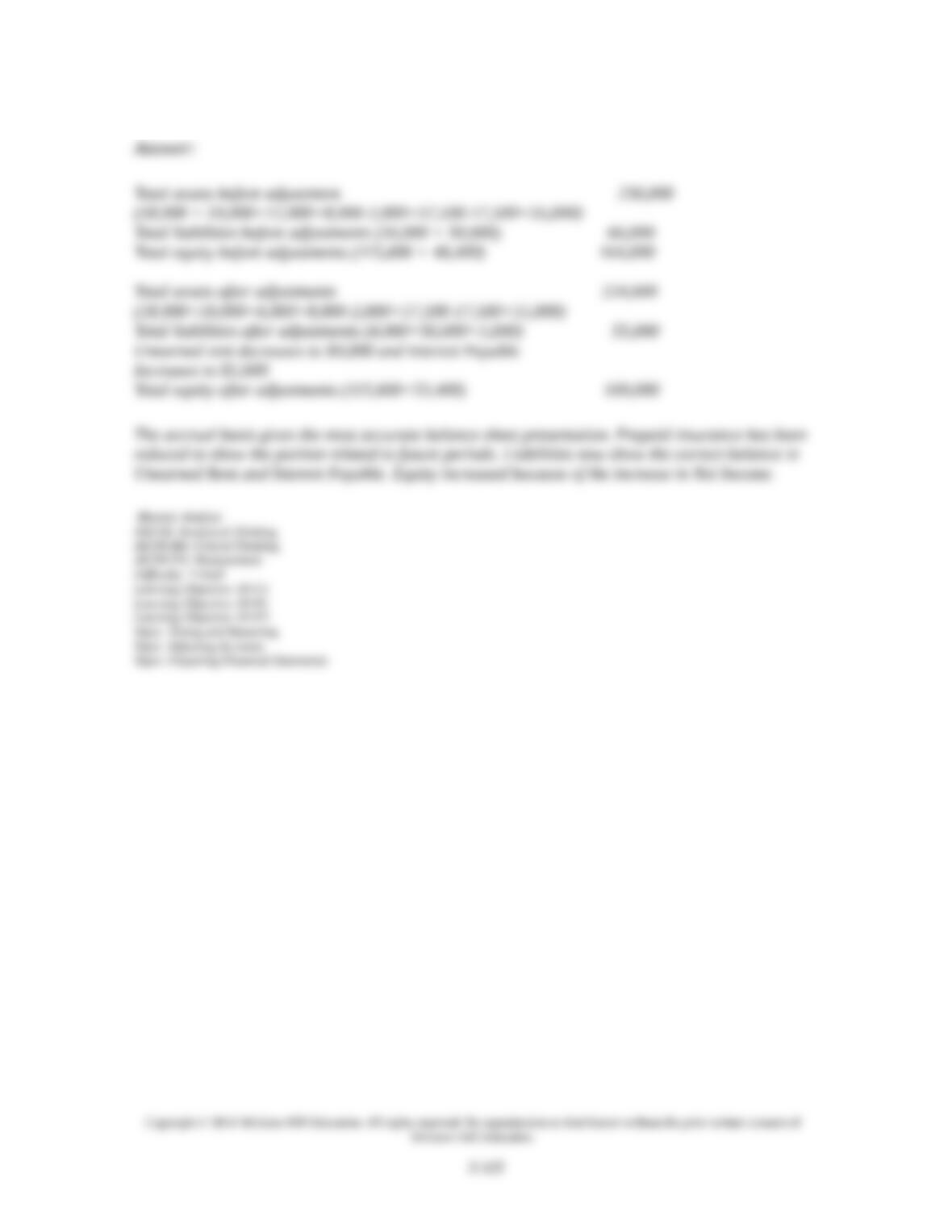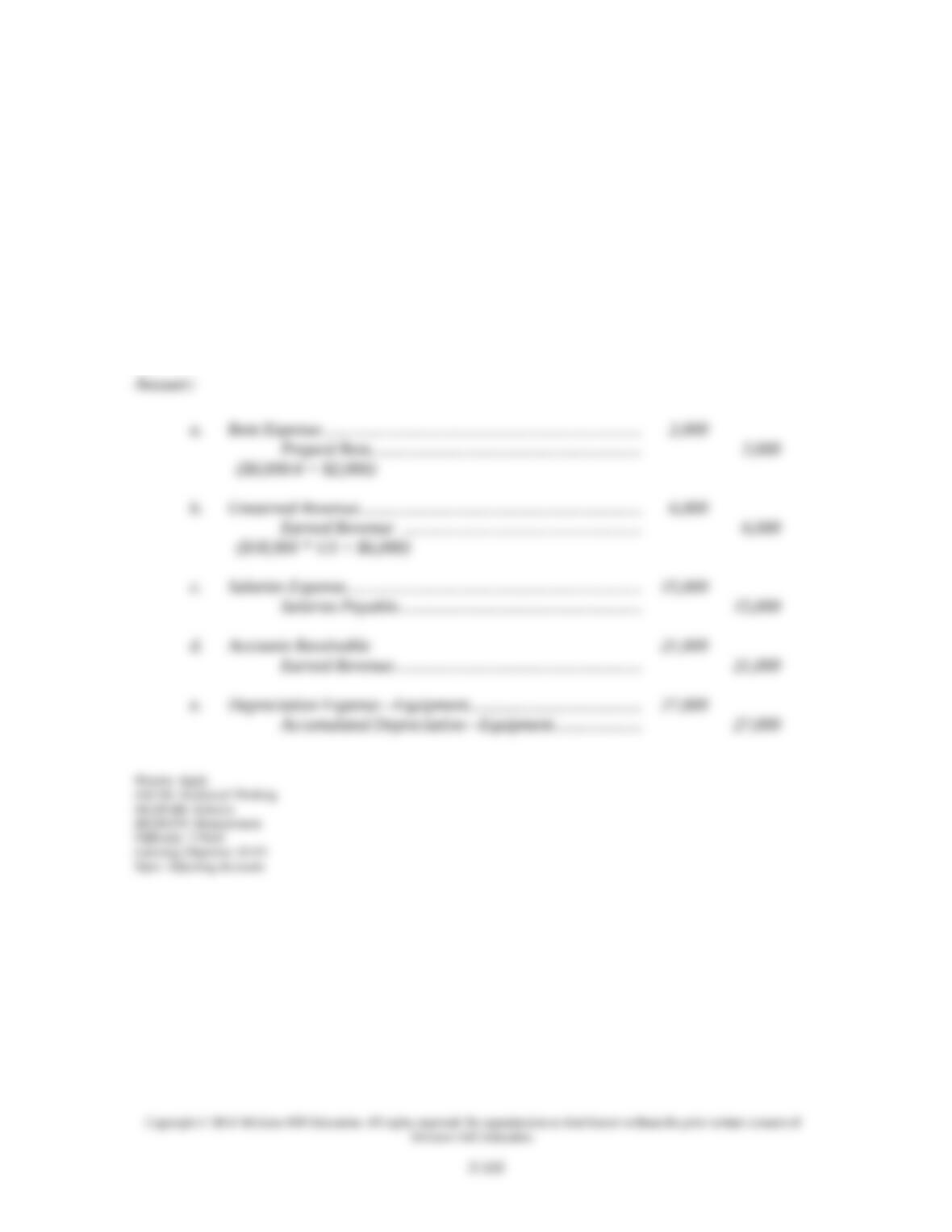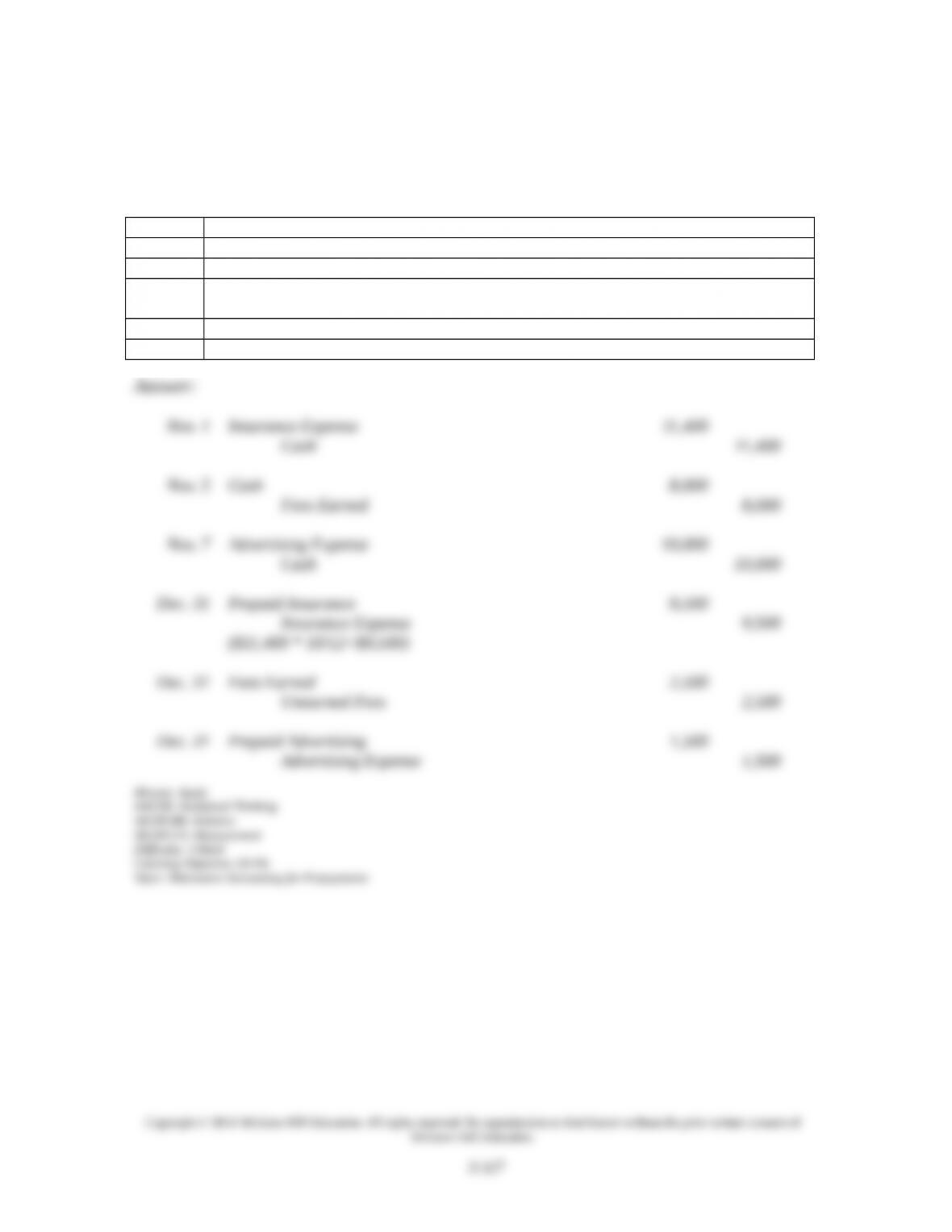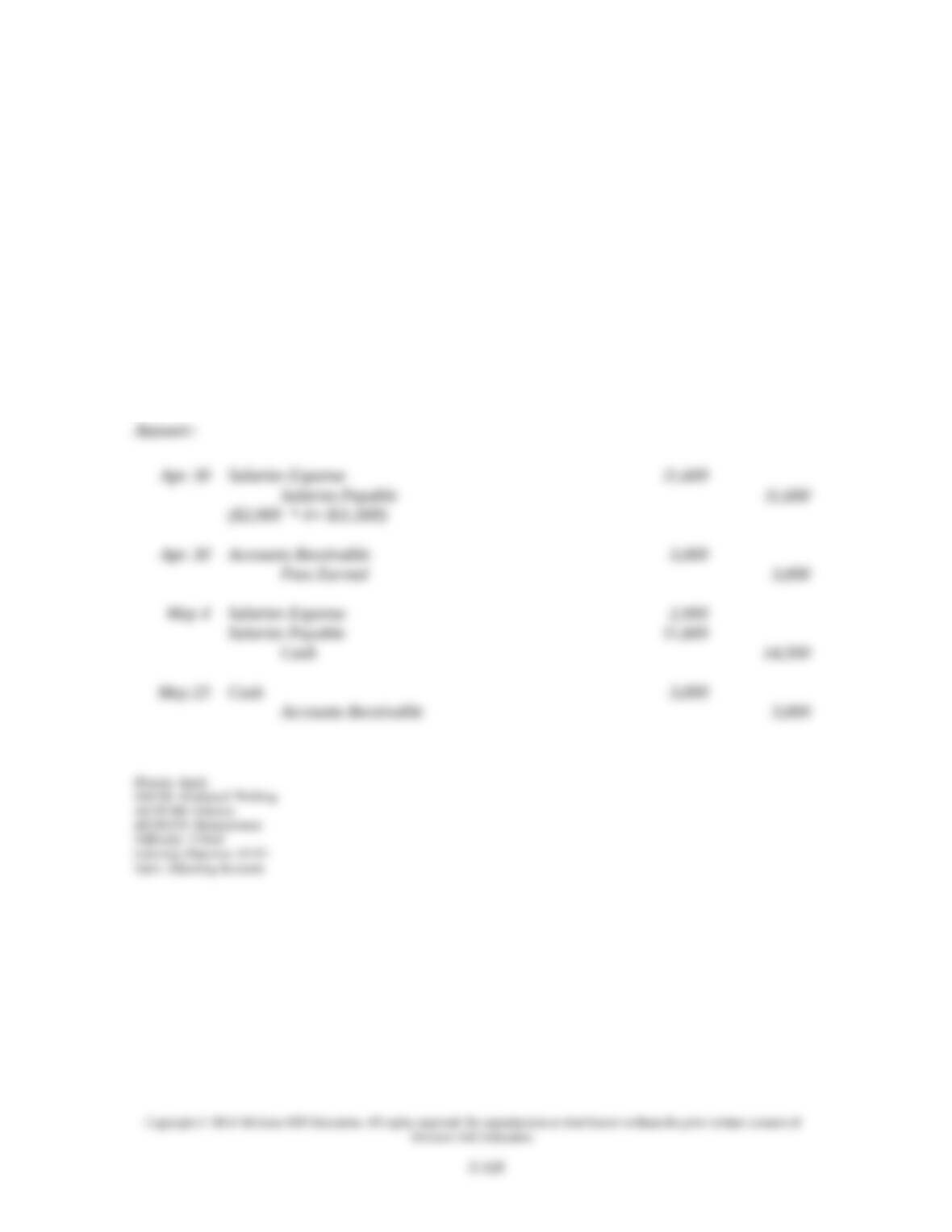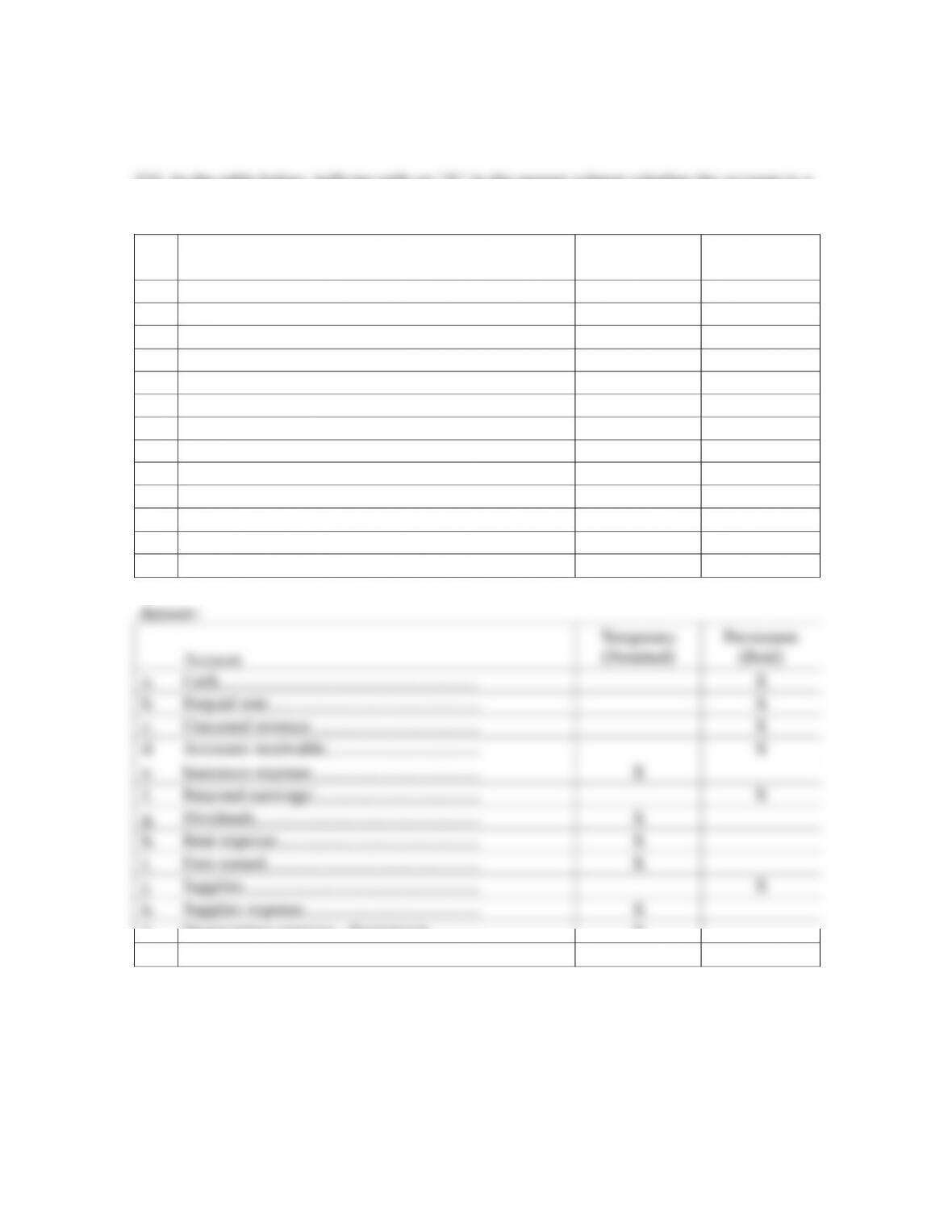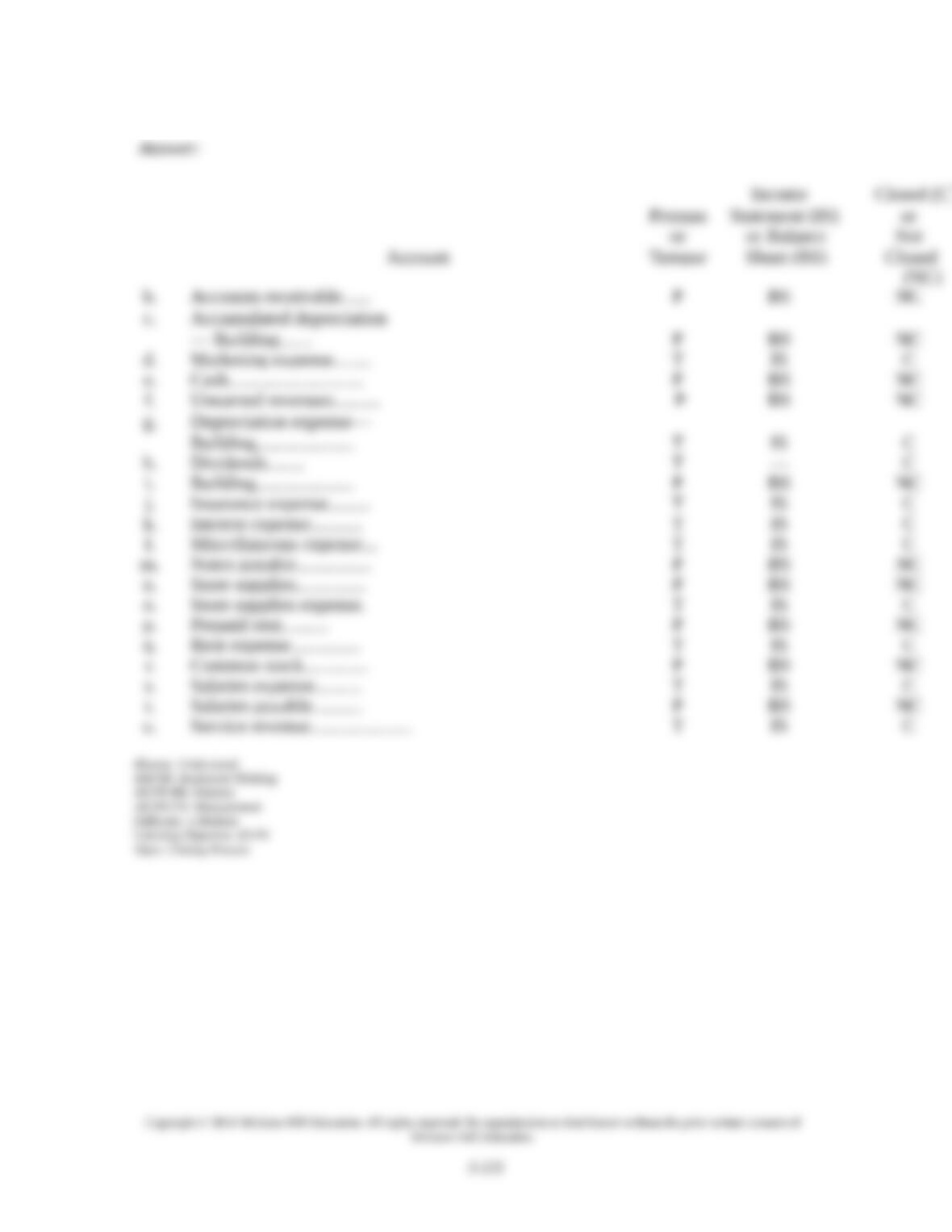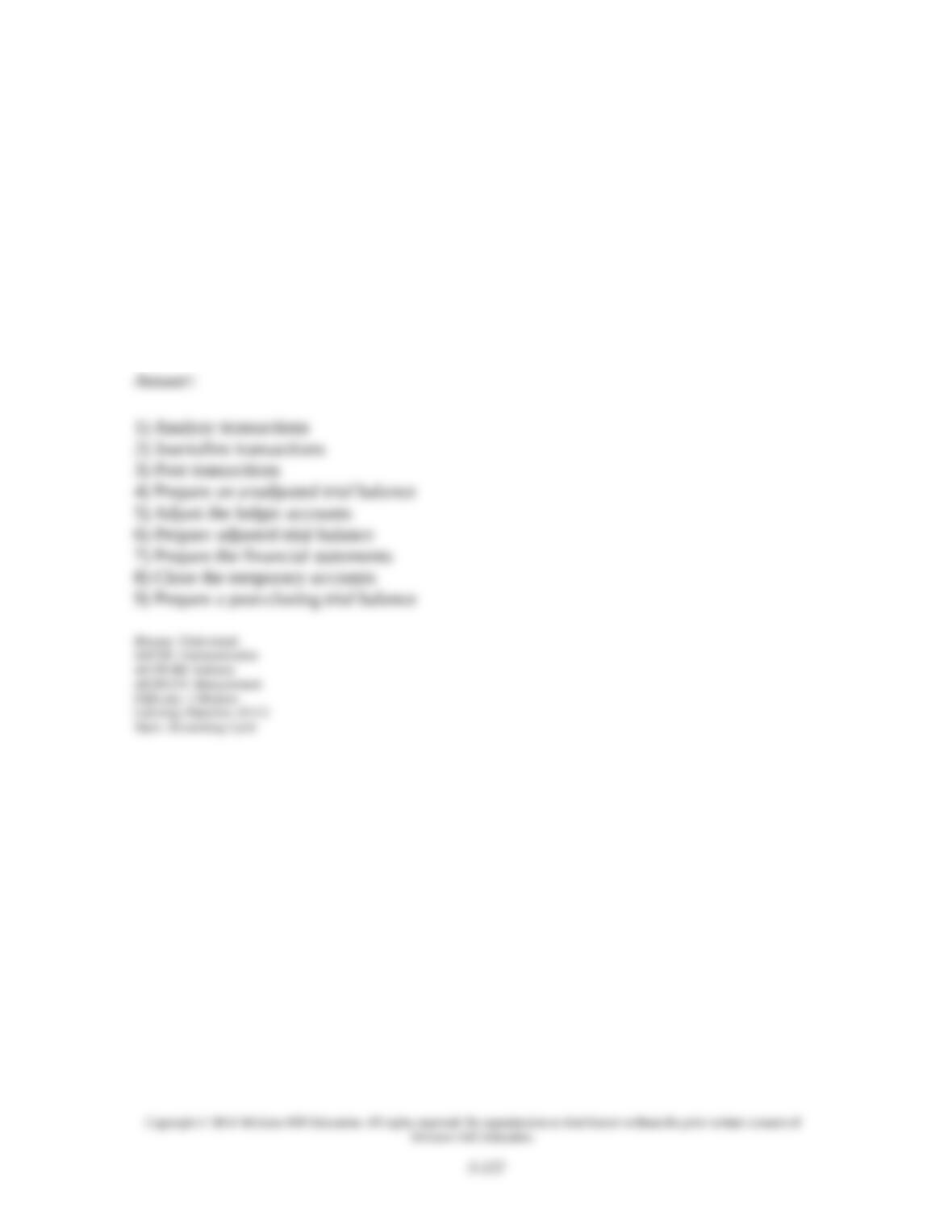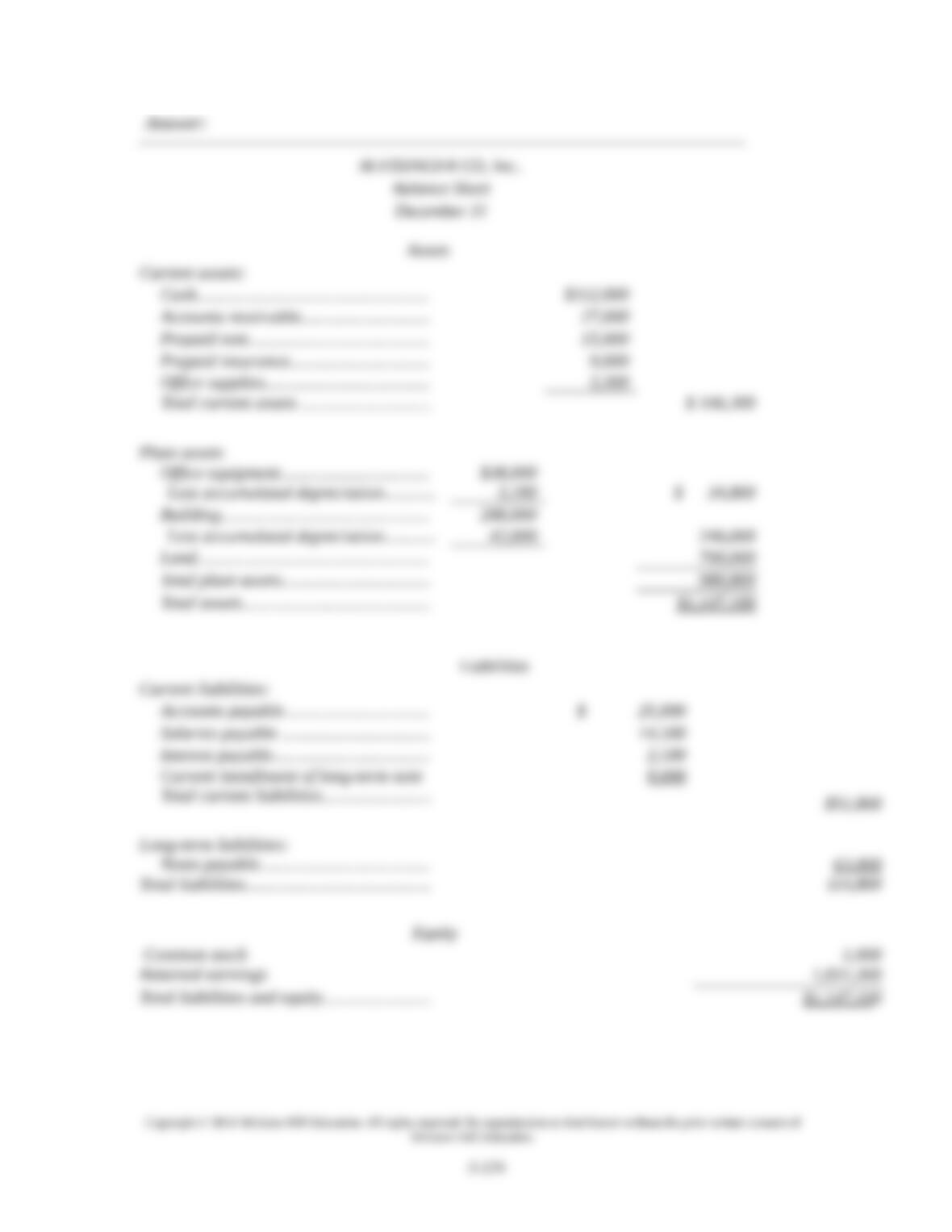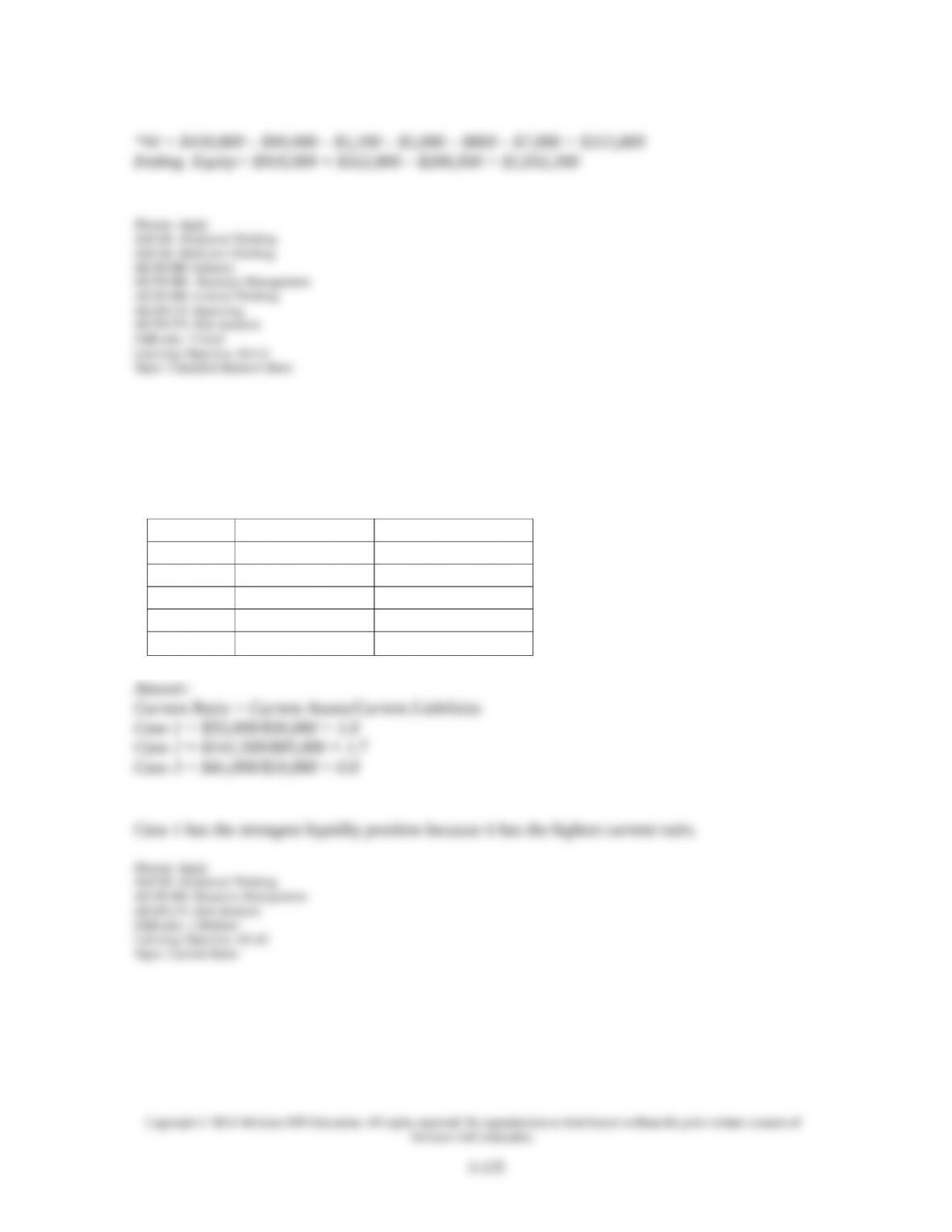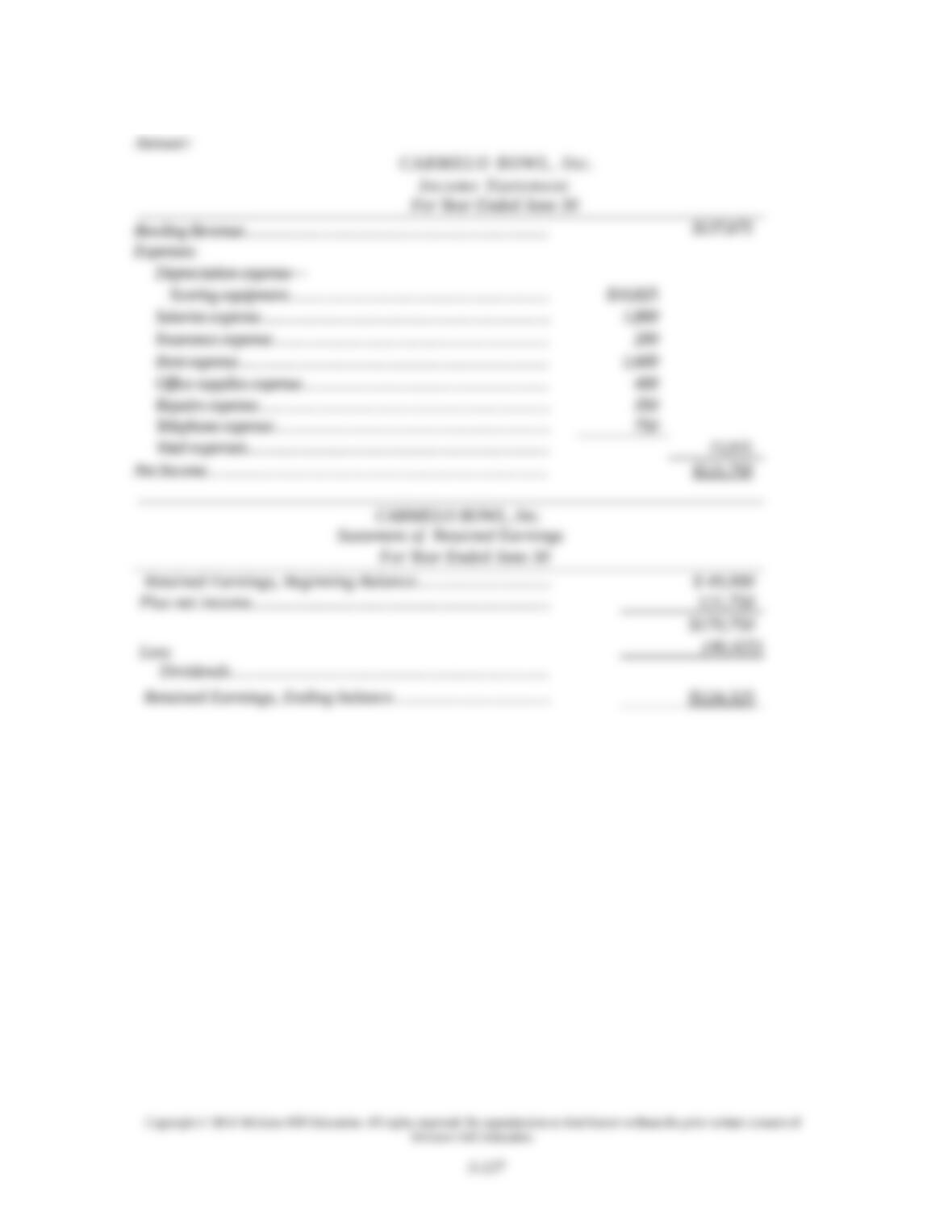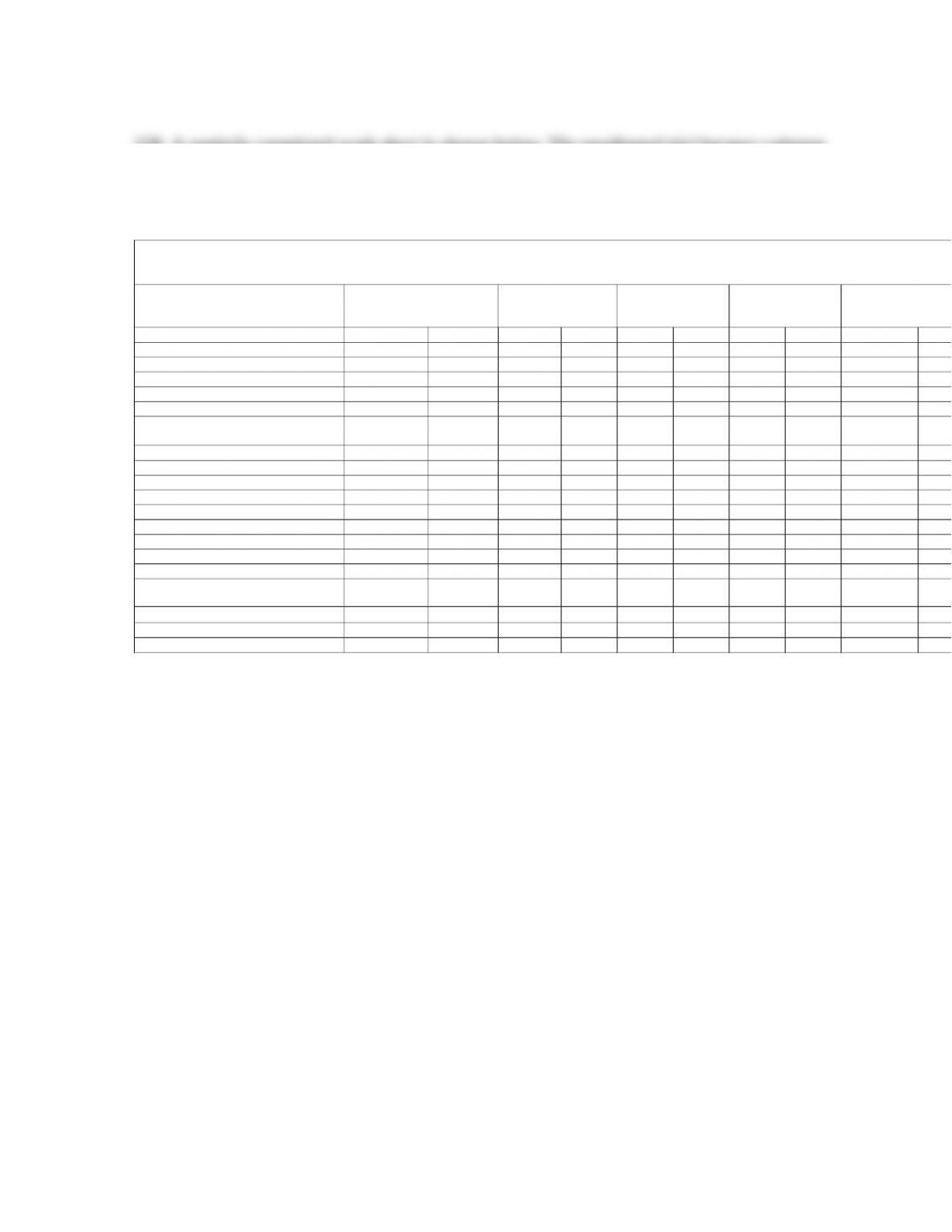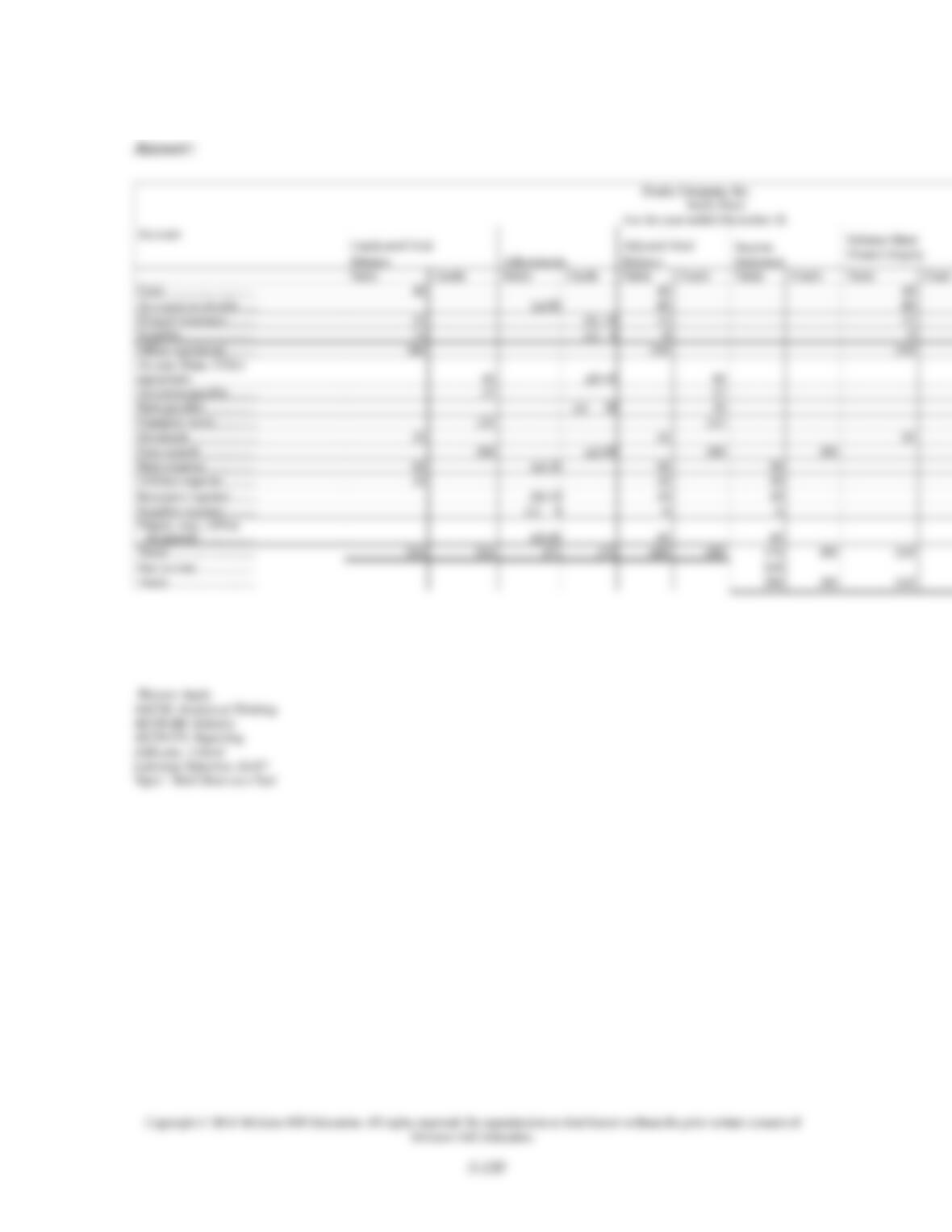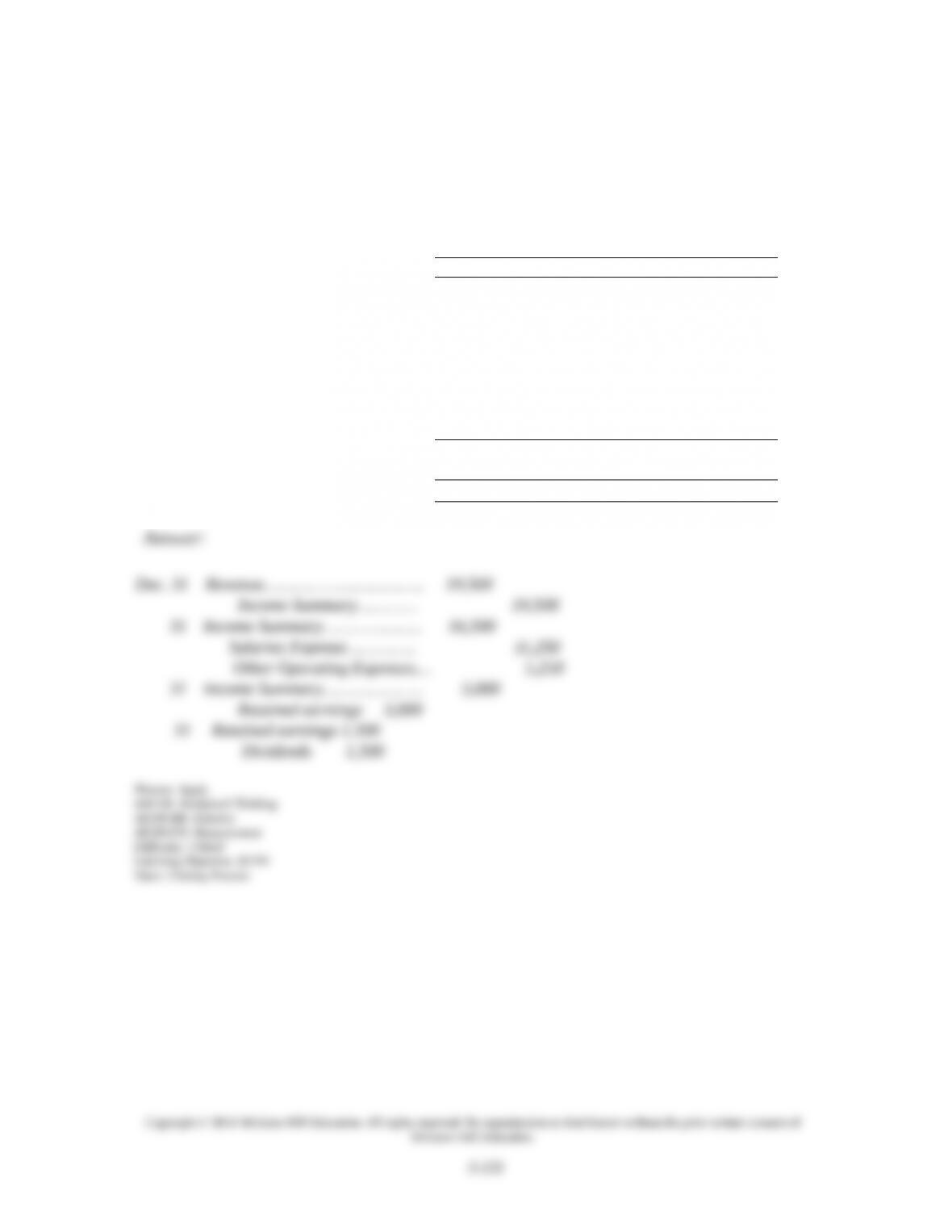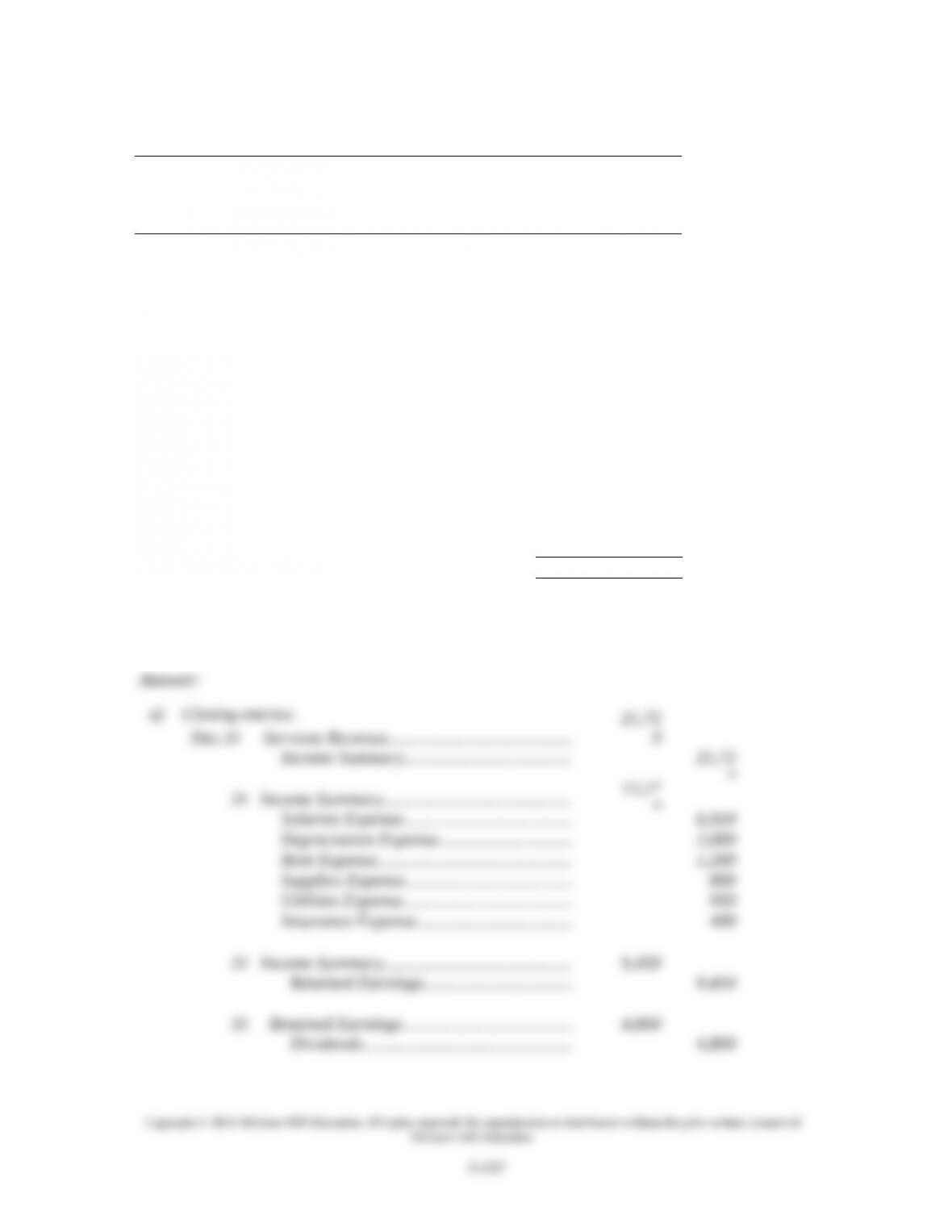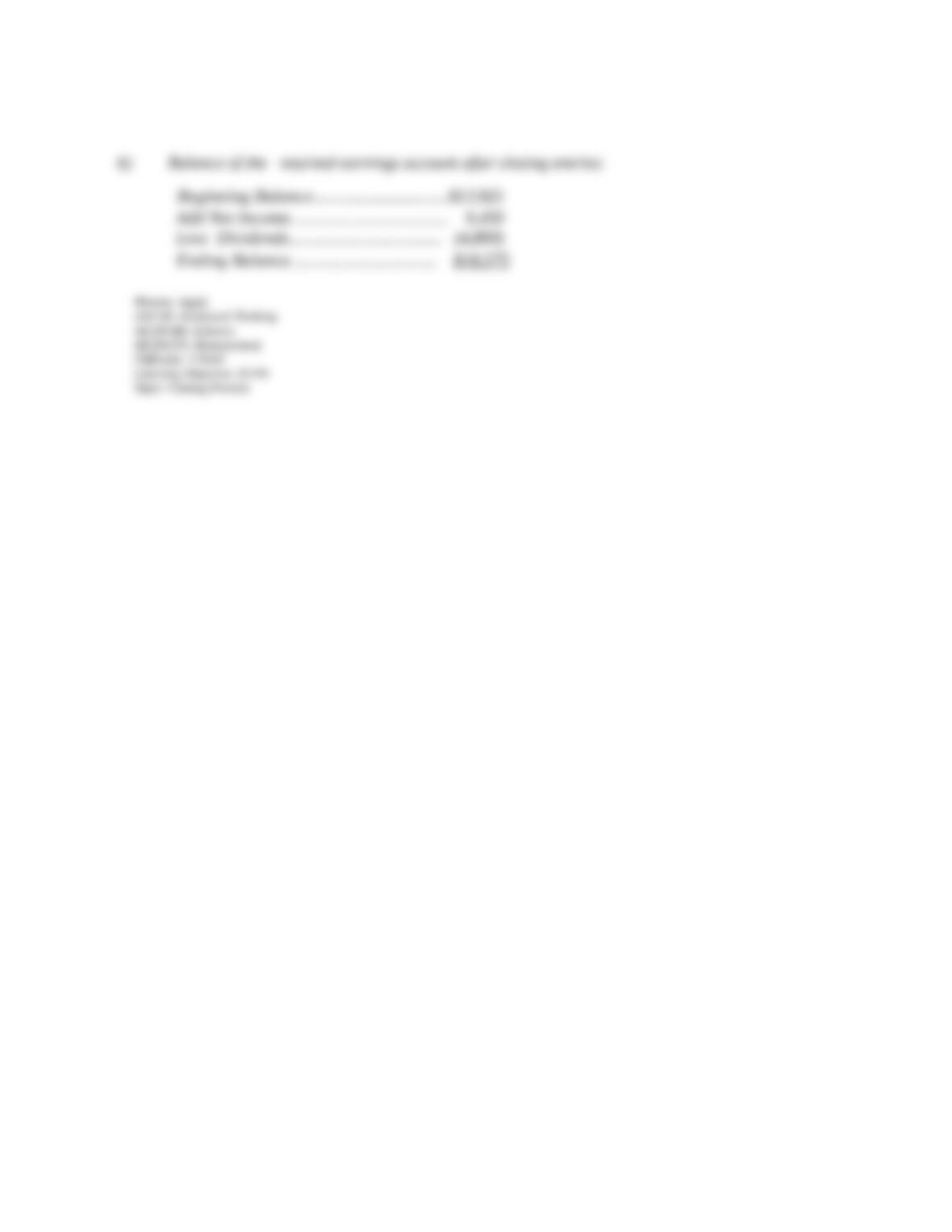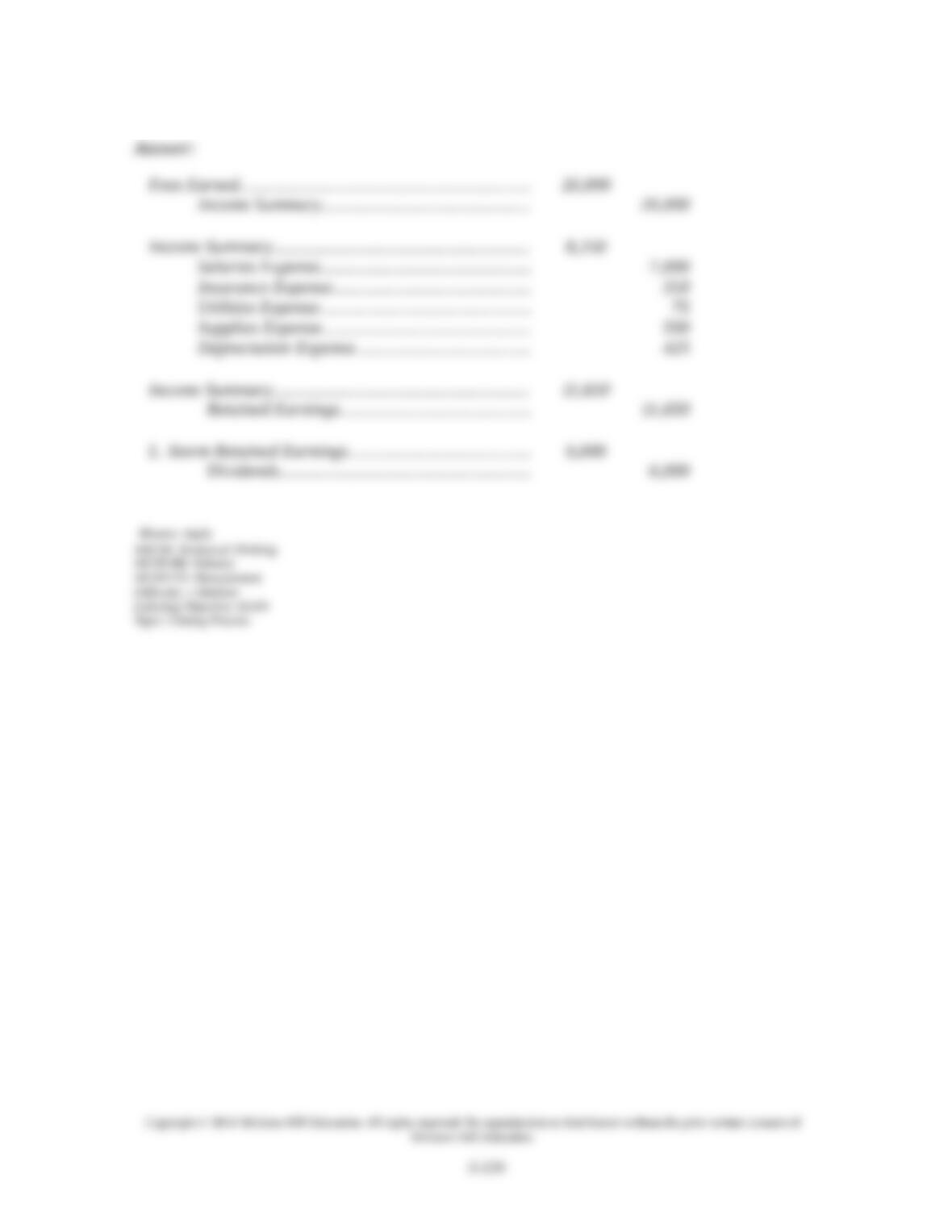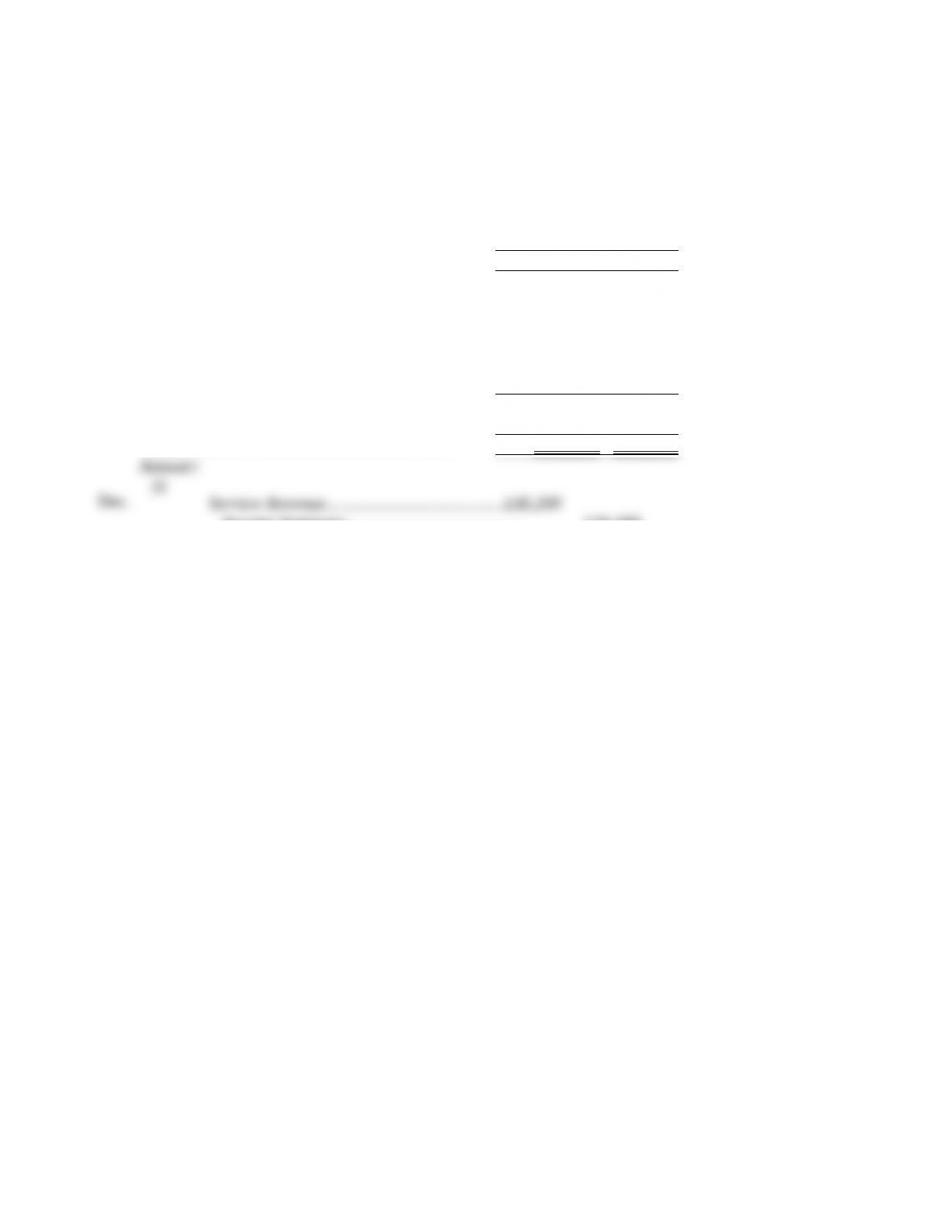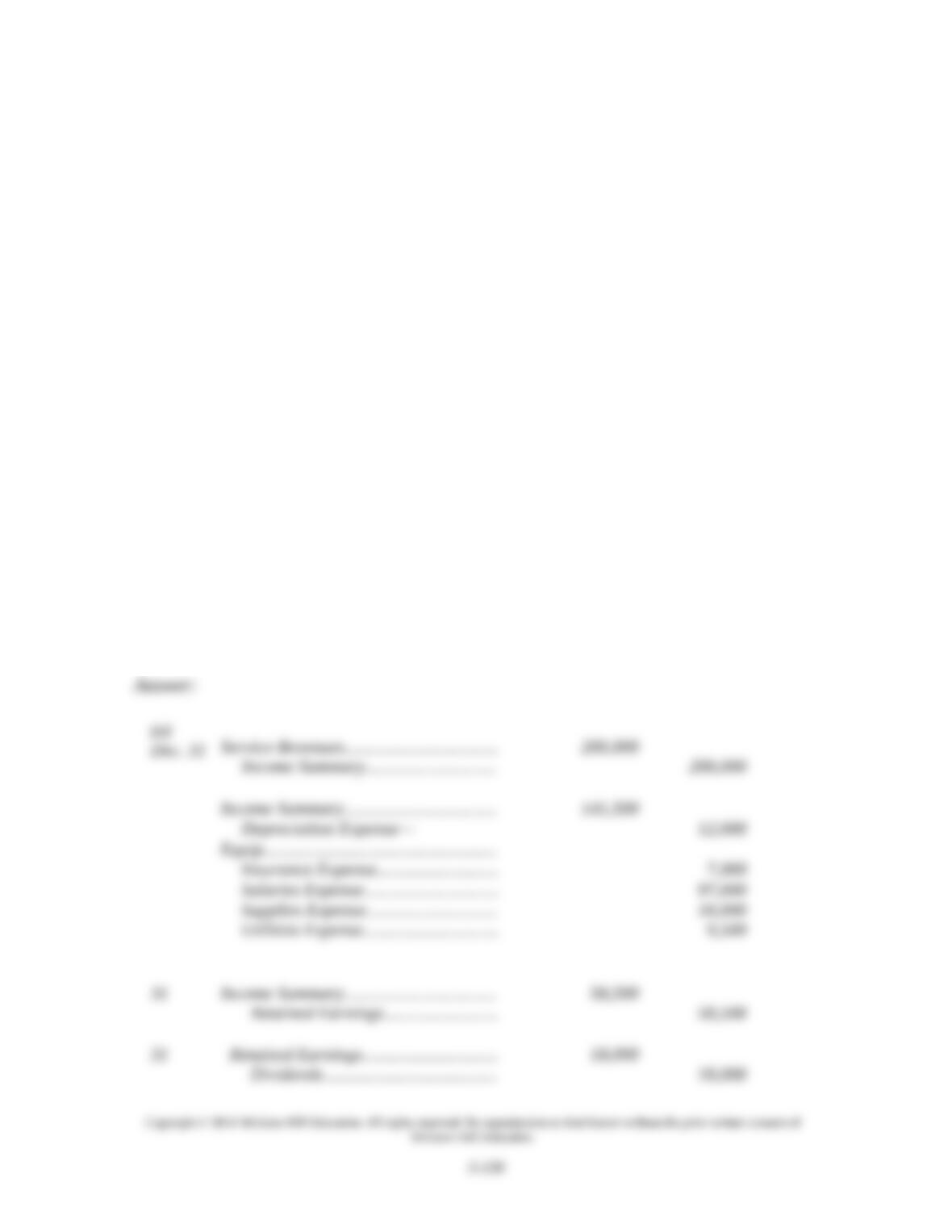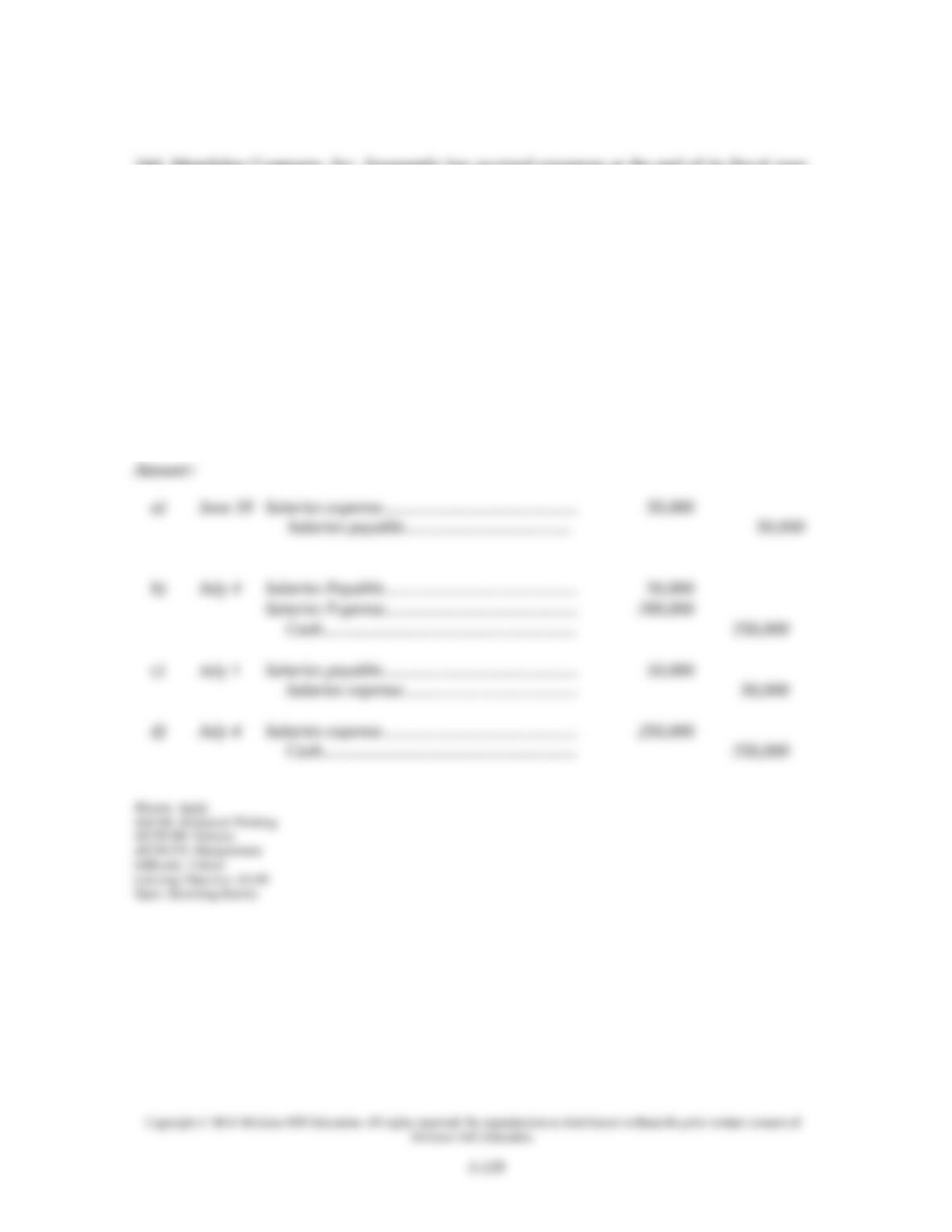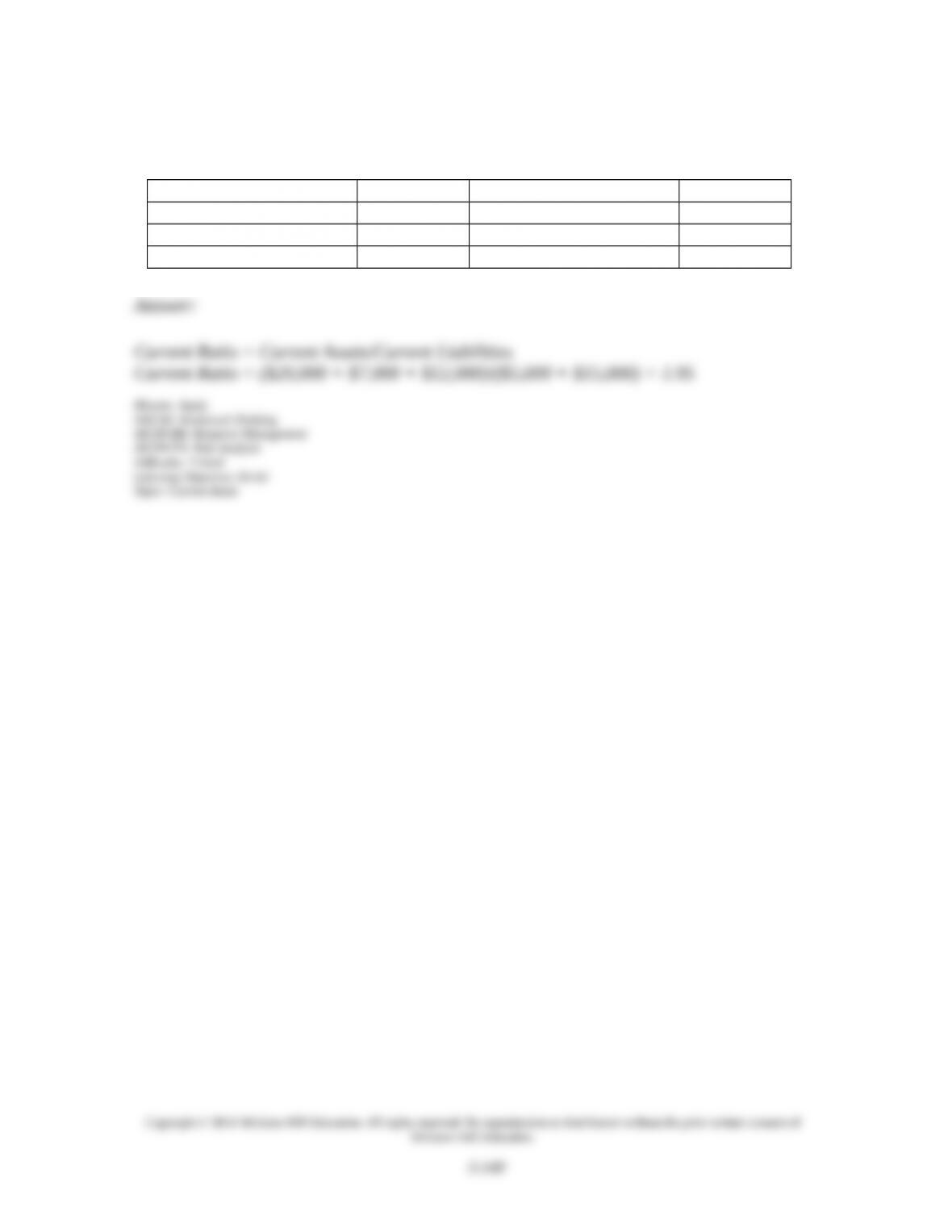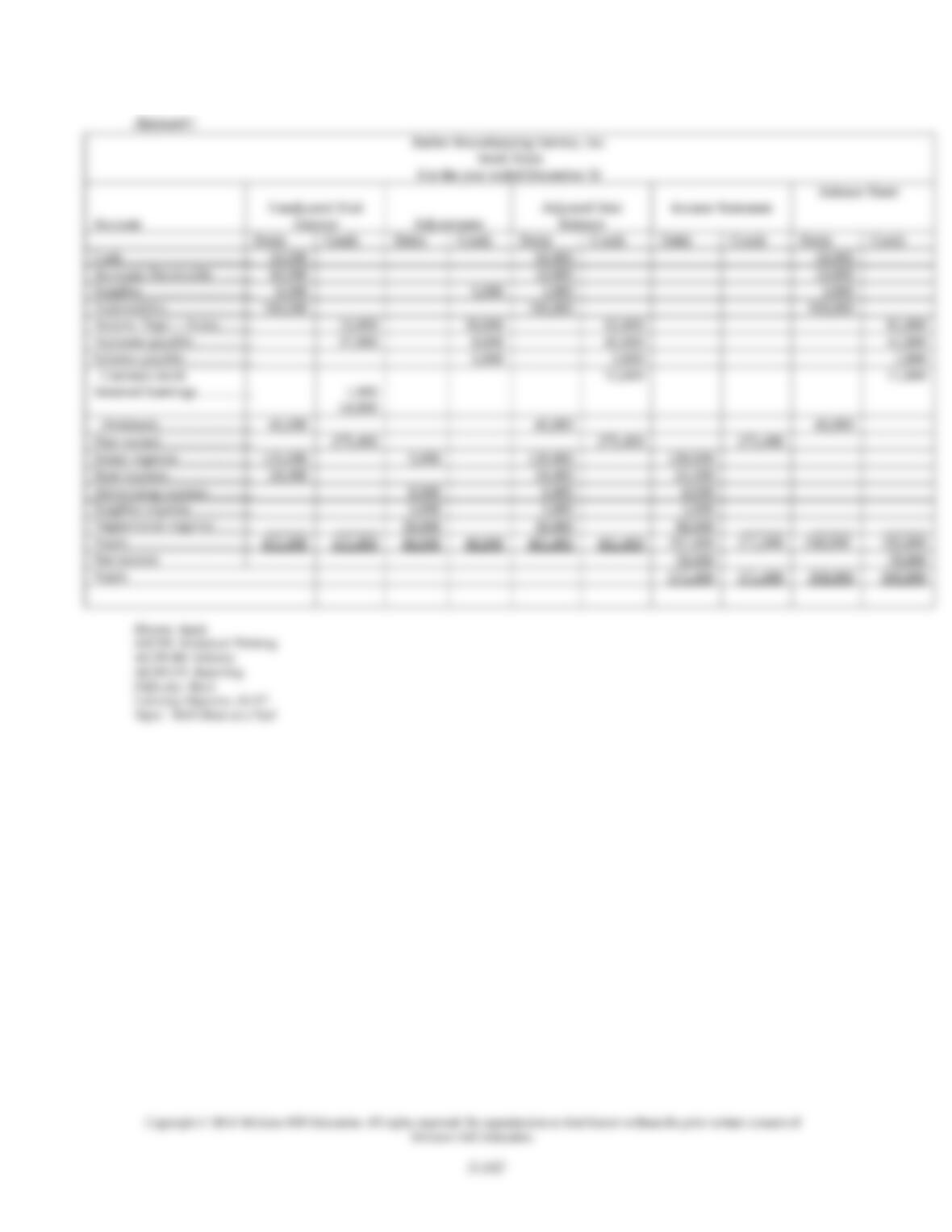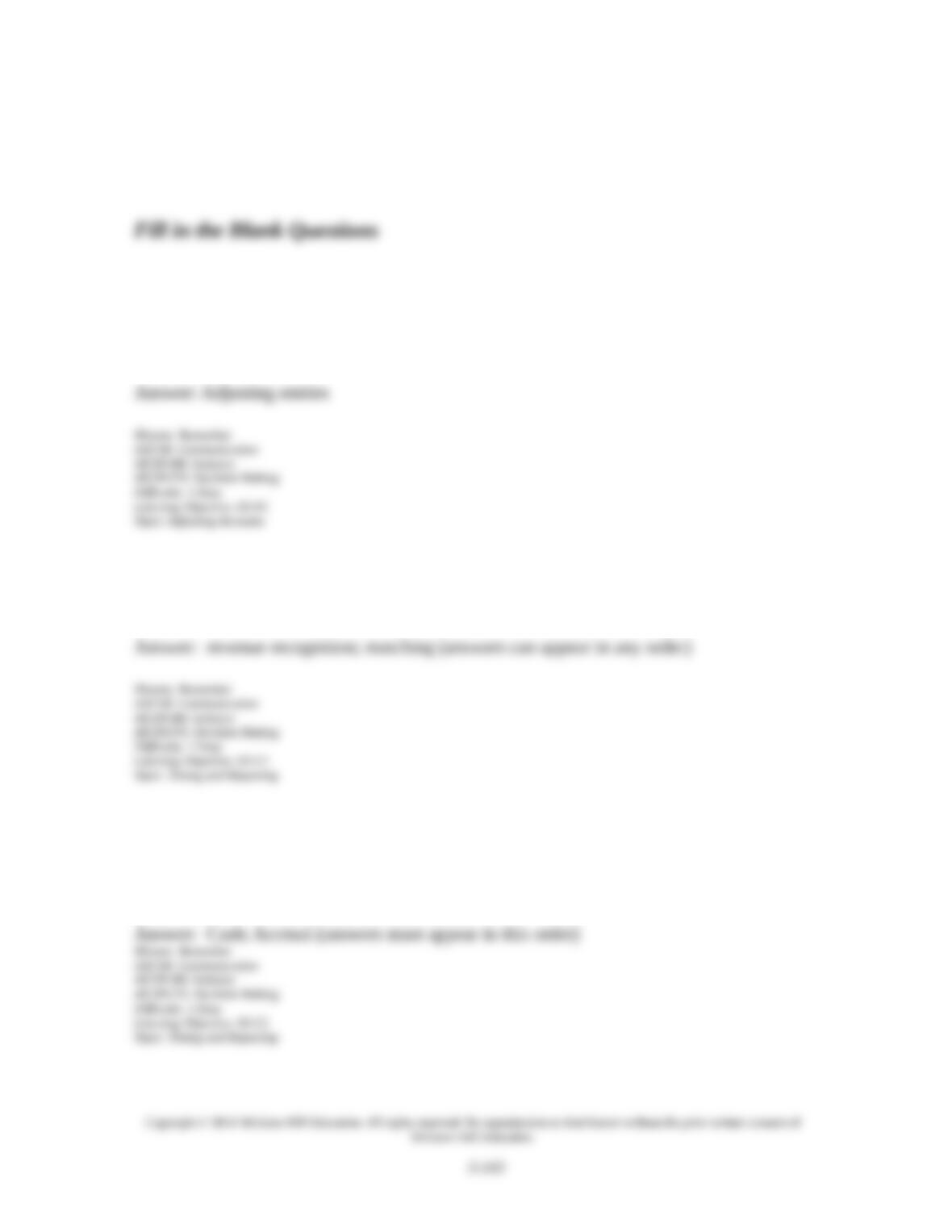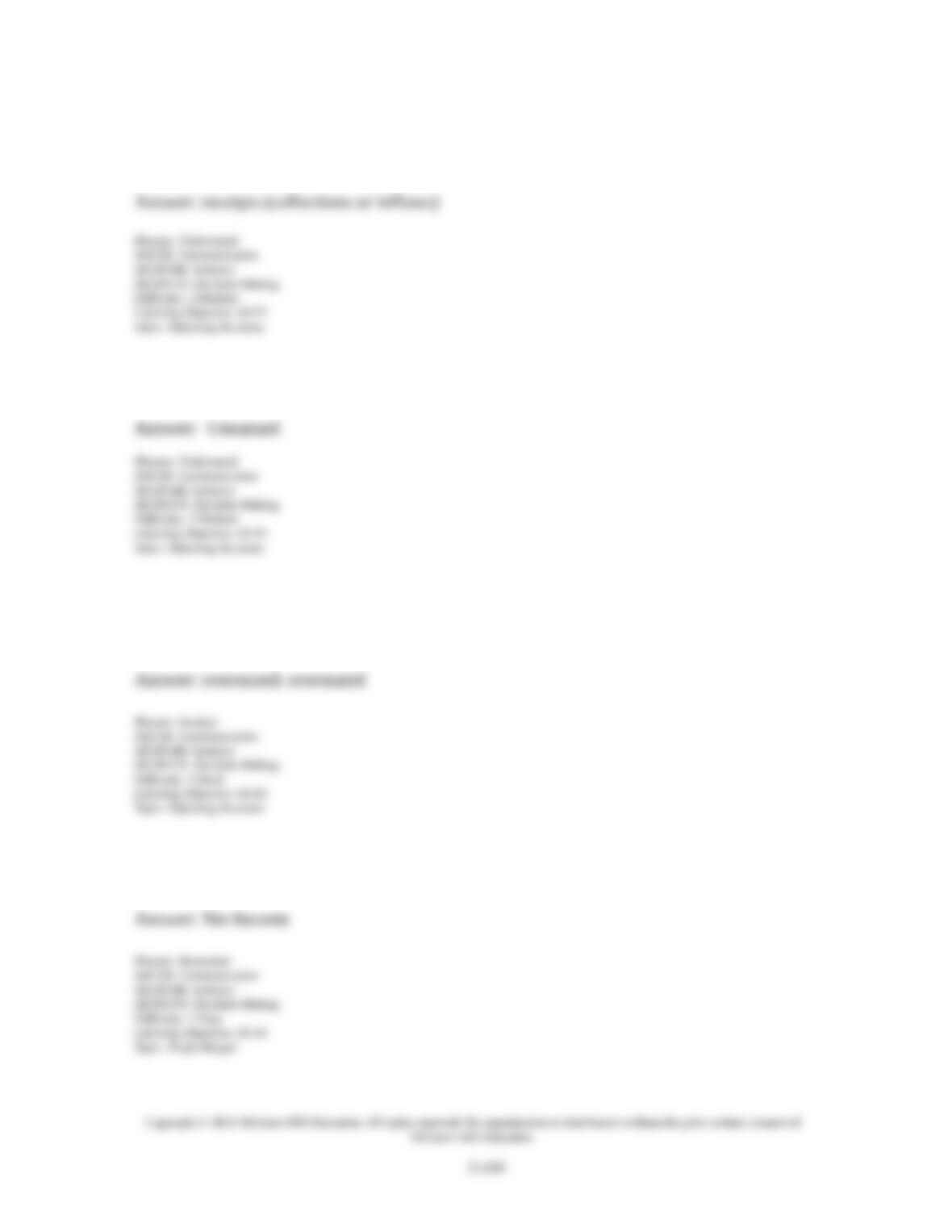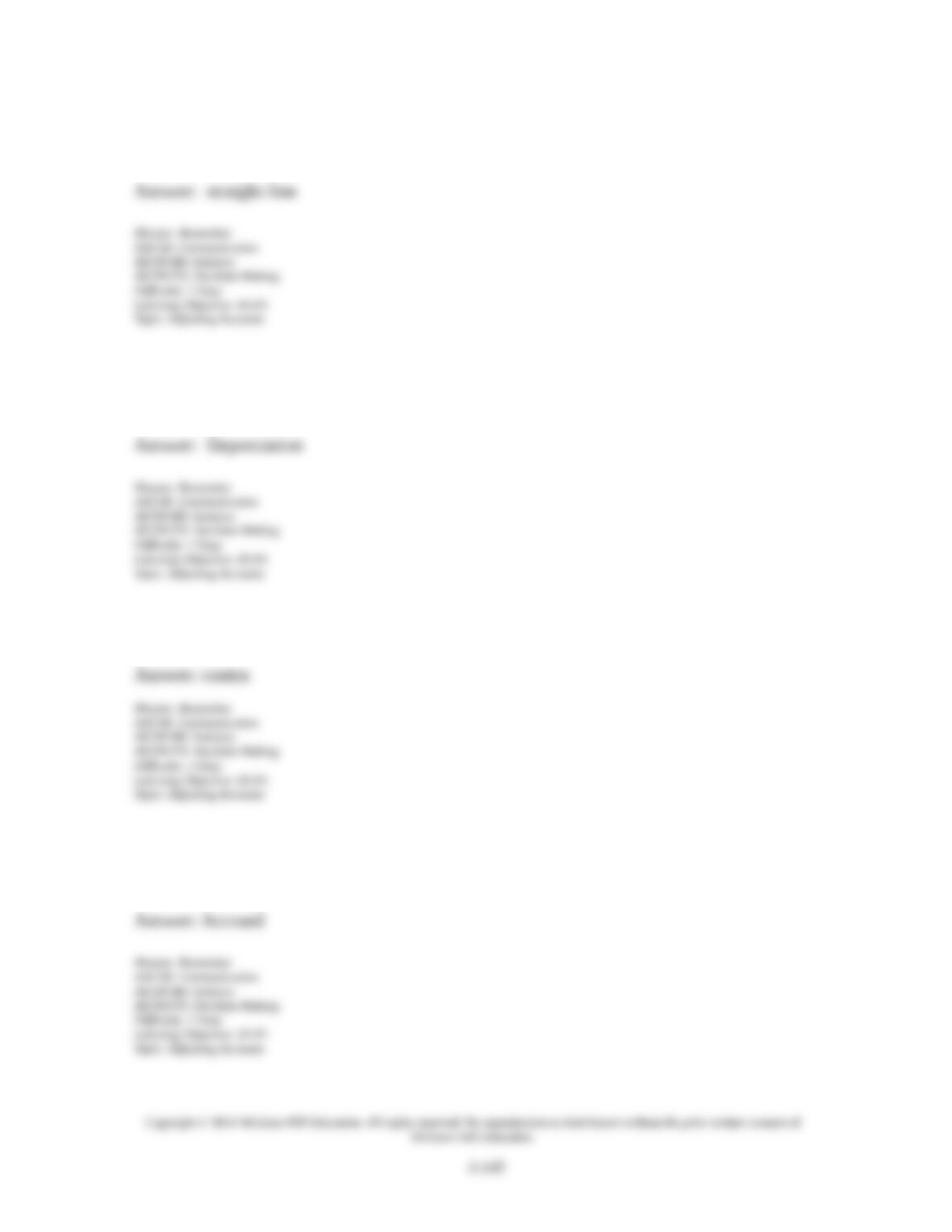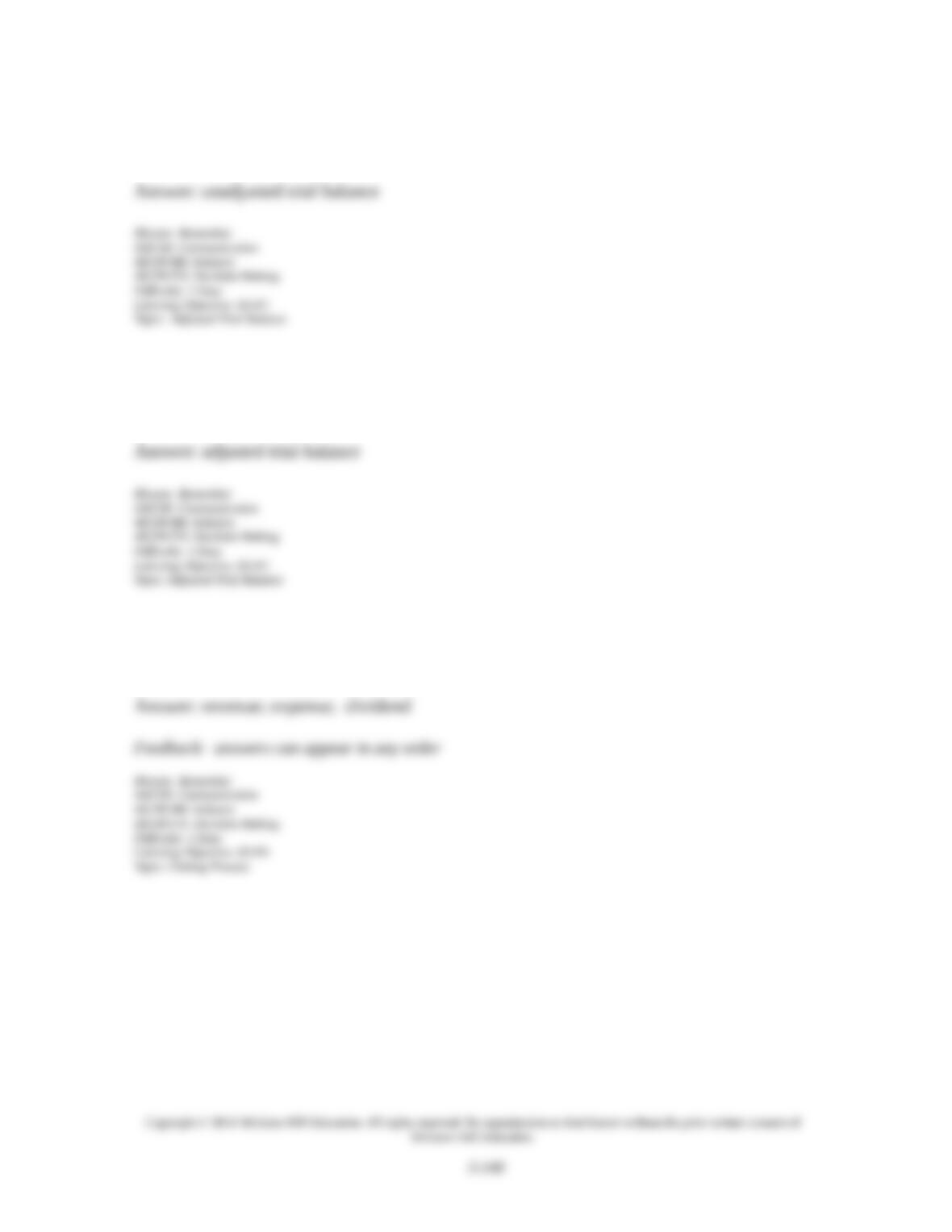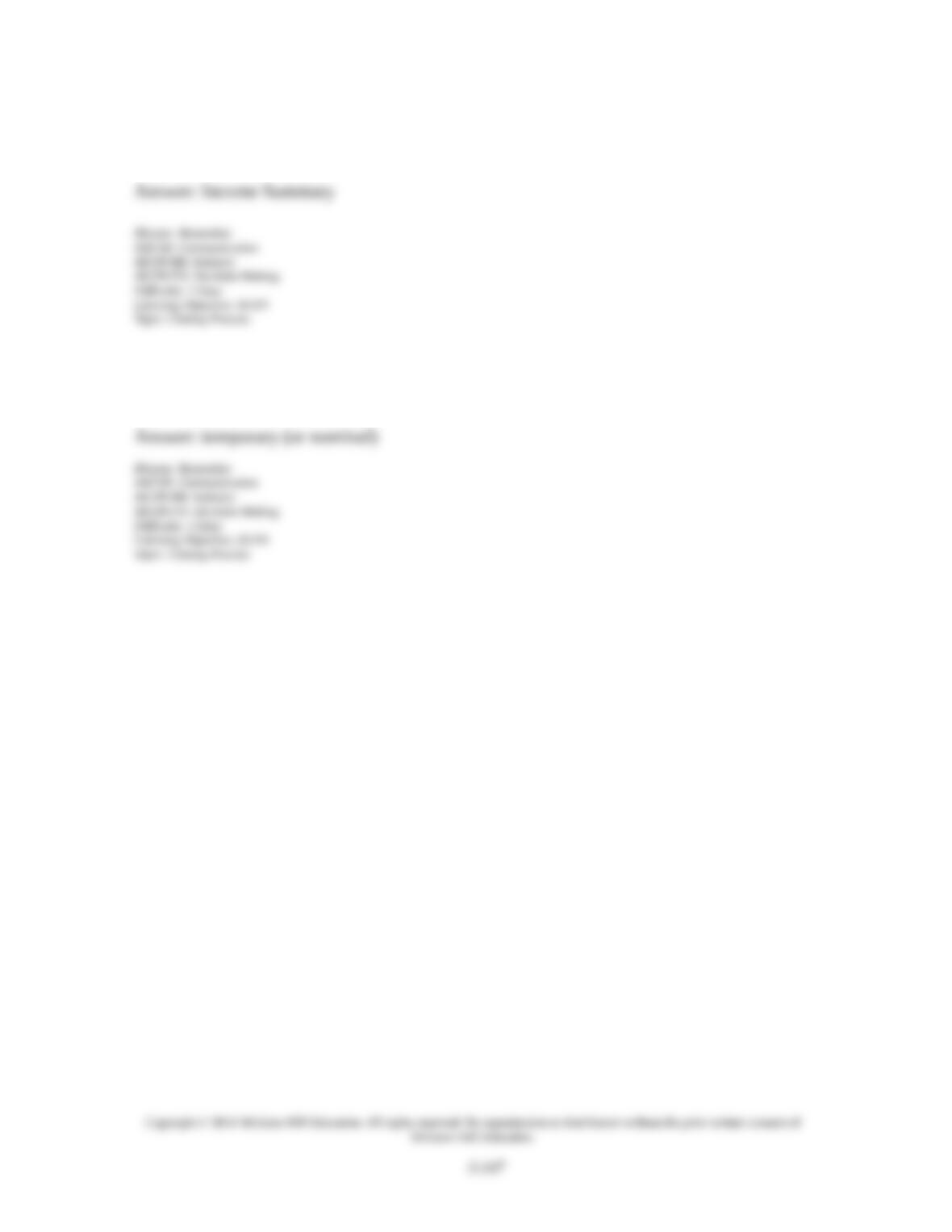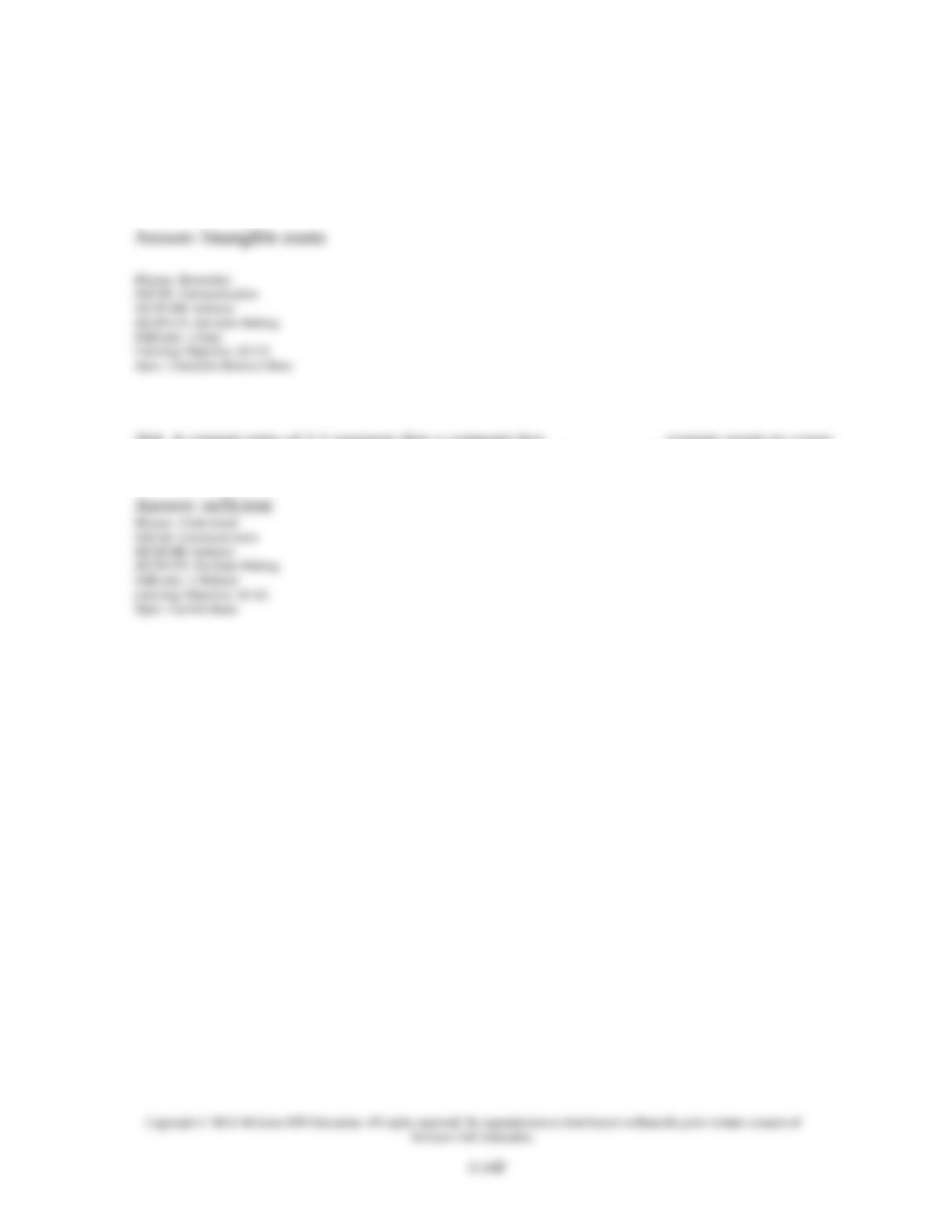220. Based on the unadjusted trial balance for Highlight Styling, Inc. and the adjusting
information given below, prepare the adjusting journal entries for Highlight Styling Inc..
Highlight Styling Inc.’s unadjusted trial balance for the current year follows:
Highlight Styling, Inc.
Trial Balance
December 31
Cash…………………………………………………. $ 2,200
Prepaid insurance …………………………………... 1,680
Shop supplies ............................................................. 790
Shop equipment ……………………………………. 3,860
Accumulated depreciation—shop equipment ……….. $ 770
Building……………………………………………... 59,500
Accumulated depreciation—building……………….. 3,840
Land …………………. 55,000
Unearned rent……………………………………….. 2,600
Long-term notes payable……………………………. 50,000
Common stock
Retained earnings
1,000
47,860
Rent earned …………………………………………. 2,400
Fees earned …………………………………………. 23,400
Wages expense ……………………………………... 3,200
Utilities expense …………………………………… 690
Property taxes expense ……………………………. 600
Interest expense …………………………………… 4,350________
Totals ……………………………………………….. $131,870 $131,870
Additional information:
a. An insurance policy examination showed $1,040 of expired insurance.
b. An inventory count showed $210 of unused shop supplies still available.
c. Depreciation expense on shop equipment, $350.
d. Depreciation expense on the building, $2,020.
e. A beautician is behind on space rental payments, and this $200 of accrued revenues was
unrecorded at the time the trial balance was prepared.
f. $800 of the Unearned Rent account balance was still unearned by year-end.
g. The one employee, a receptionist, works a five-day workweek at $50 per day. The
employee was paid last week but has worked four days this week for which she has not been
paid.
h. Three months’ property taxes, totaling $450, have accrued. This additional amount of
property taxes expense has not been recorded.
i. One month’s interest on the note payable, $600, has accrued but is unrecorded.
Copyright © 2016 McGraw-Hill Education. All rights reserved. No reproduction or distribution without the prior written consent of
McGraw-Hill Education.
3-102

























































































